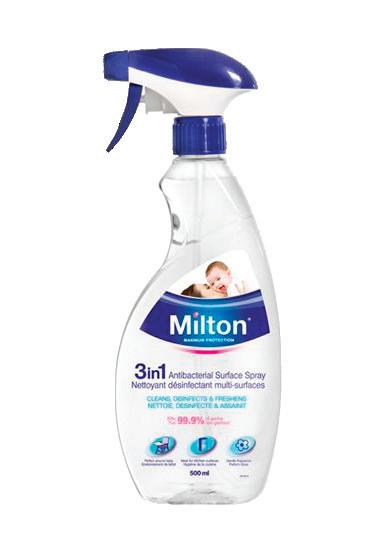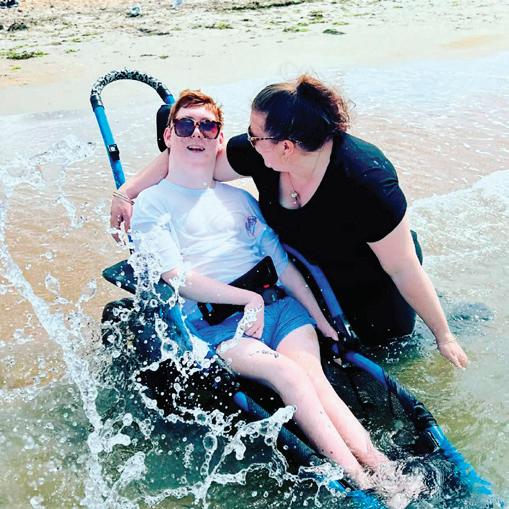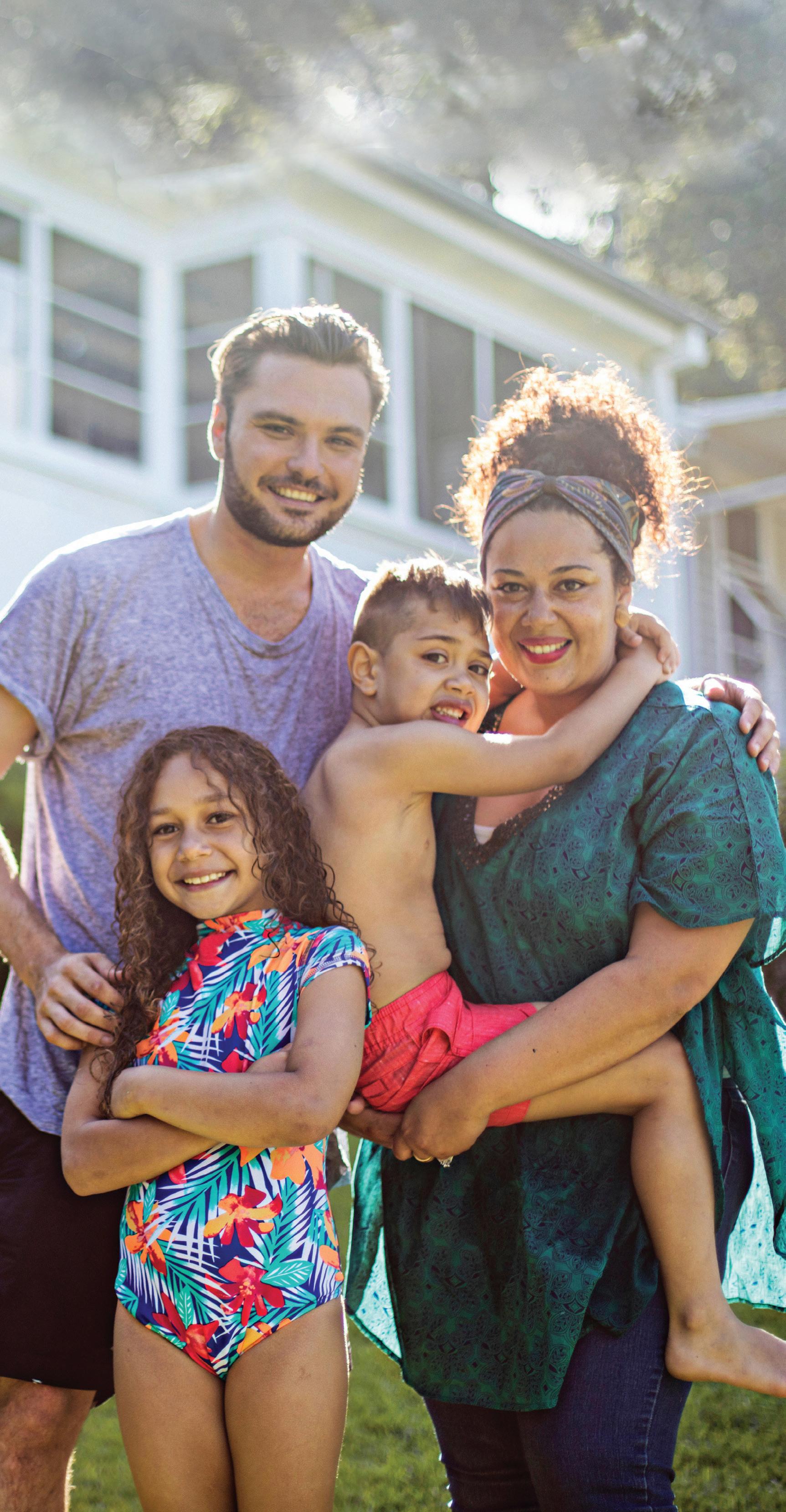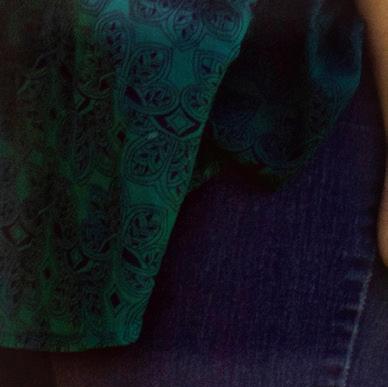DISABILITY

WHAT







DISABILITY

WHAT






Embrace Autumn with our pediatric walking frames and gait trainers, designed to enhance interaction with the environment, promote greater engagement with people and objects, and foster confidence and self-esteem in your child.
Explore the season with comfort and support, and see your child develop each step of the way.
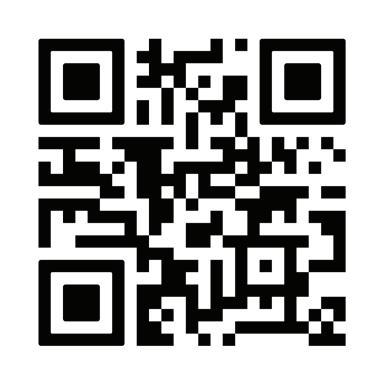

Hello and welcome to Autumn – our first issue of 2024! For most of the country it’s been a hot and steamy summer and I for one am looking forward to a little less humidity and some slightly cooler days, as I’m sure many of you are too!
With the kids finally back in school, we’ve hit the ground running here at Source Kids; it’s going to be a huge year for us as we celebrate 10 years of creating incredible content, information and events for our community and some new projects we have underway in planning.
As this edition hits the printer our team is throwing open the doors to our Adelaide Expo, followed by Sydney in just two weeks’ time, and we can’t wait to meet thousands of you at these events. We do love the opportunity to say hi!
Speaking of communication, in our Autumn issue we’re putting the spotlight on speech and language and the different ways our kids communicate – including typing, speech, AAC, and Key Word Sign. Plus, we’ve got a handy guide to decoding those hard-to-understand speech therapy reports! And for those about to start their employment journey we share some tips and info on getting ready for work. Plus, there is plenty more including disability podcasts we love, a review of seating and positioning products and of course your stories!
I hope you enjoy the read, and for those in Adelaide or Sydney we can’t wait to see you soon!
Much love,

CONTENT EDITOR:
Nicole Davis
PRODUCT EDITOR:
Kelly Wilton
HEAD OF SALES & BUSINESS DEVELOPMENT:
Matthew Rainsford, matthew@sourcekids.com.au
0409 418 362
HEAD OF EVENTS:
Sirianni, naomi@sourcekids.com.au
755 043
GRAPHIC DESIGN: Emma Henderson
PUBLISHER/CEO: Emma Price



ModiBodi’s Teen First Period Kit is now even better! This cute custom box is packed with all the period-care info, products, and fun extras your teen needs to understand and manage their cycle in comfort and style, including one pair of Modibodi period Black Hipster Bikinis in Moderate-Heavy absorbency, ready to pull on and go! modibodi.com

The Hidden Disabilities Sunflower is a simple tool to voluntarily share that you have a disability or condition, an “invisible disability”. It allows others to understand that the wearer may need a helping hand, understanding, or more time in shops, at work, on transport, or in public spaces. More places are becoming “sunflower friendly” including airports and larger shopping centres like Westfield. It’s also recognised internationally. To find out more head to: hdsunflower.com/au
The B Box lunch box is simple for kids to open and close, with an easy to open latch and handle which encourages independence. Plus, we love it as the design is accessible for kids with low tone or limited upper mobility. With a variety of compartments, it allows for a variety of foods inside. It also has leak-proof silicone seals on two sections which let you store wet foods like watermelon and thick yoghurts (no liquids). adventuresnacks.com.au
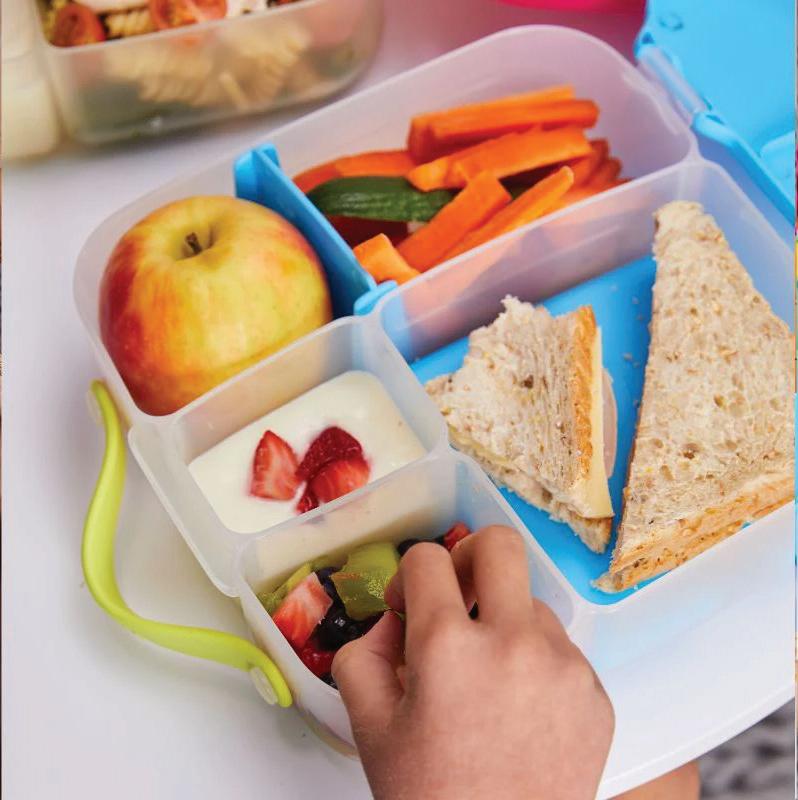
If one of your goals for 2024 is to sort out some new assistive technology for your child, our AT guide is the perfect place to start. We’ve covered manual and powered wheelchairs, pushchairs and strollers, bikes and trikes, standers, walkers, seating and positioning, bathroom aids and beds and sleep systems. It’s your assistive tech bible!



We are a team of experienced occupational therapists, speech pathologists, psychologists, positive behaviour support practitioners, social workers, music therapists and physiotherapists.
With a united focus on achieving your goals, we’re more than a service – we’re your partners for therapy supports.
Visit us at livebig.com.au or call us on 1300 390 222

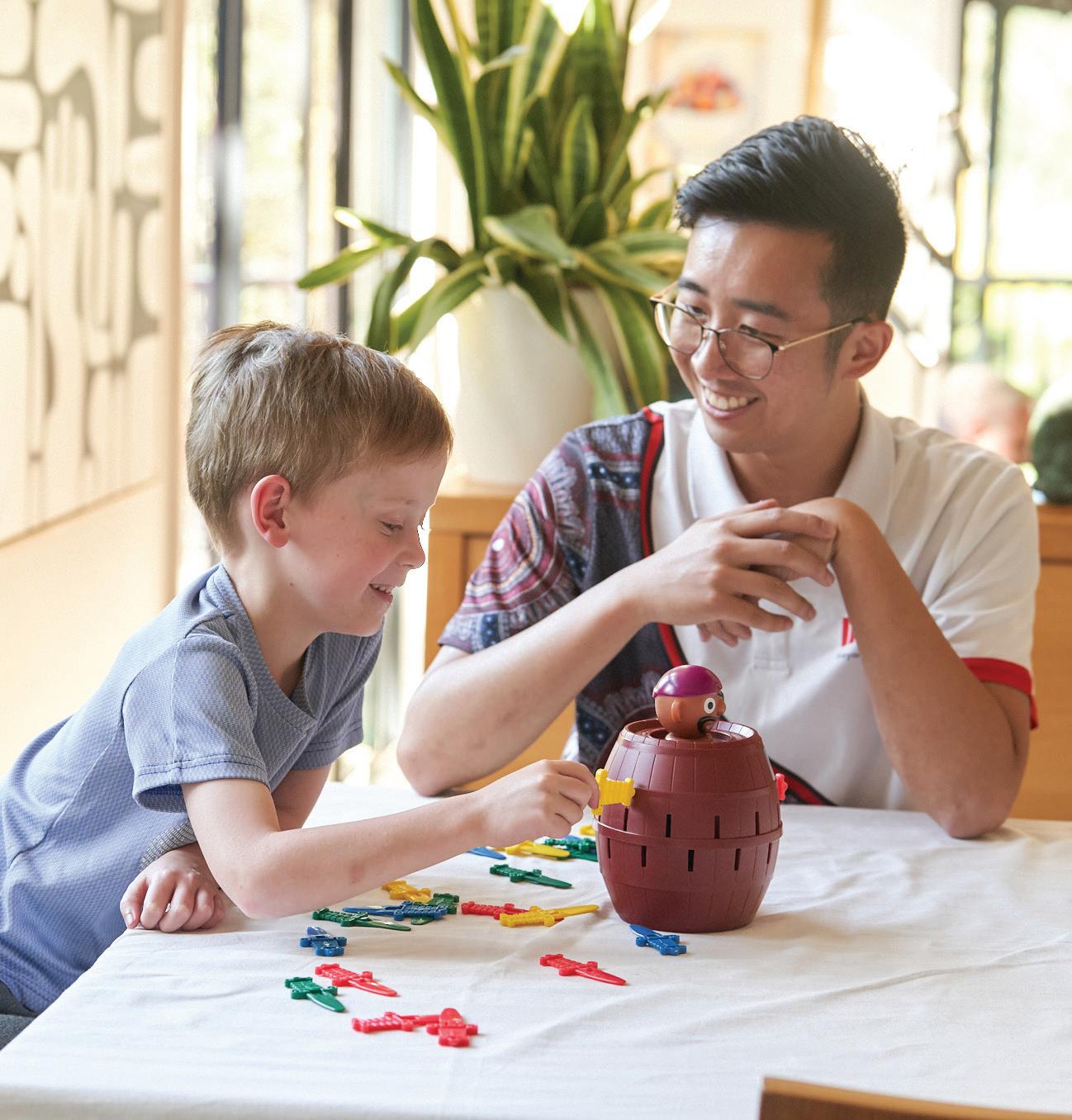




A one-of-a-kind immersive experience is coming to Brisbane, Queensland from August 2024. Soon your family will be able to pay a visit to Australia’s favourite blue heeler family and check out the family home with Bingo and Bluey, Chilli and Bandit! bluey.tv/blueys-world
Did you know that the Athlete’s Foot Australia offers quiet (sensory) appointments for all children and adults with disability. Partnering with Aspect (Autism Spectrum Australia), the Athlete’s Foot website has a communication chart to download prior to your appointment and a short video that shows you and your child what to expect. To find out more and to book a quiet appointment, visit: theathletesfoot.com.au
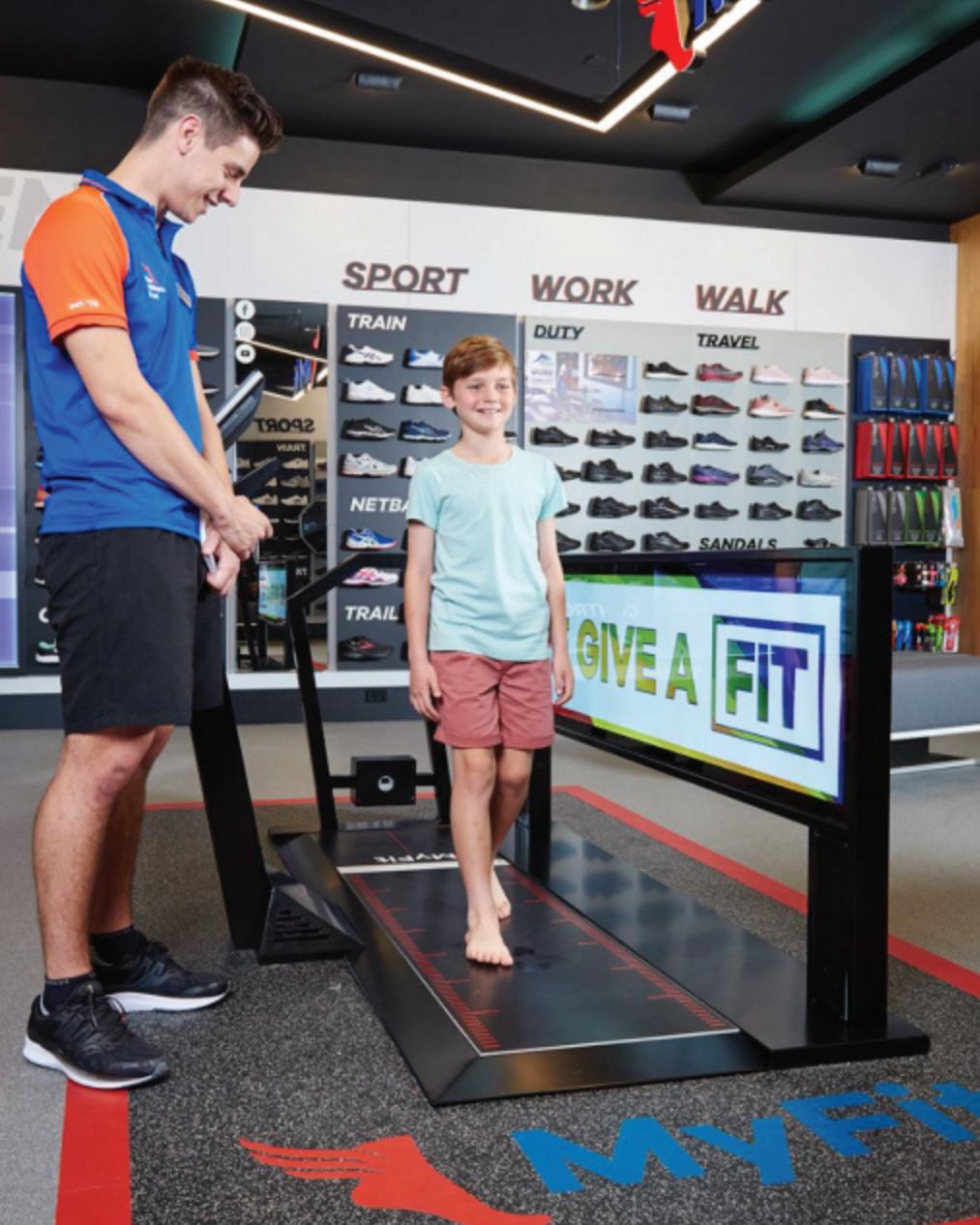
This new Duplo Lego set is all about learning about emotions. The set comes with four diverse characters, each with two different expressions so kids can change the toy faces to express how they are feeling. Lego is also great for developing fine motor skills and working on speech and language development. A great resource for home, school, or therapy! lego.bricksmegastore.com

Feeling My Emotions is a beautiful tool for children who struggle to express themselves verbally. The book starts by exploring feelings through colour and body language and introduces the idea of holding space for big feelings, such as grief. This is a fantastic resource to explore emotional intelligence with your children. mywellbeingschool.com

From the development of speech & language, to signing, typing and AAC products to provide support, over the next few pages we explore the world of communication



The acquisition of speech and language is a pivotal developmental stage for our children, moulding their ability to communicate, articulate thoughts, and foster literacy skills.
In everyday life, the terms ‘speech’ and ‘language’ are often used interchangeably. However, when health professionals use those terms, they are describing two different things.
Here’s why.
Speech is about verbal communication and the features and functions that impact on the clarity of a person’s verbal output. It’s about how clear we sound to others when we’re talking. Speech is produced
using the anatomy of the mouth and respiratory tract (including the lungs, vocal cords, lips and tongue) in a highly coordinated fashion to create sounds that make sense to the people who hear them.
Aside from the articulation (or pronunciation) of words, speech can be impacted by the rate of speech, pitch, volume or other characteristics. Someone may speak softly and quickly, for example, or have difficulty articulating certain letter sounds, which makes it hard for others to understand them.
Language, however, is any system used to communicate meaning. It can include spoken or written words and symbols, plus hand and body gestures. AUSLAN, for example, is the sign language of the Australian deaf community. It’s how we share ideas, express our needs and interact with others.
Because speech and language are different, so are the disorders associated with them.
In children, a speech delay or disorder usually presents with speech sound errors that impact on their speech clarity. For example, they could be having difficulty with accurately producing certain sounds, or missing out on saying some sounds in words, or replacing some sounds with others. Speech therapy for kids helps to address speech difficulties like these.
When they’re learning to speak, it is natural for young children to make “errors” with some sounds. You’ve probably heard a toddler say “lellow” when they mean “yellow”, for example, or exclaim “look at the big twuck!” When articulation errors still occur past a certain age, it can indicate the child has a speech delay or impairment.
In contrast, because language is about meaning, a child with a language delay or disorder can have difficulty understanding what is said or have limited vocabulary to communicate their needs, wants and thoughts. Or, they may have difficulty with both understanding and expressing language.
Difficulty in understanding what is being said is known as a receptive language difficulty. Difficulty in communicating what they want to, such as their thoughts or needs, is called an expressive language difficulty. For example, a child may be able to pronounce words perfectly, but have difficulty finding the right ones or putting them into a logical sequence.
A child who is understanding or expressing less than what is typical of their peers could have a language delay.
Speech and language delays or impairments may occur separately. Other children may have both types of difficulties. Sometimes, one type of difficulty can impact on the other.

While children develop speech and language at different rates, certain skills usually start to emerge by certain ages. These speech and language milestones can help you know whether your child’s skills are developing typically.
Here’s a guide about what to expect in typically developing children aged 12 months to five years.
• Starting to understand simple commands (the word “no”, for example)
• Can recognise their own name and familiar sounds
• Can understand the names of familiar objects and people
• Beginning to produce a few basic words between 12-18 months of age
• Making babbling sounds that imitate speech
• Uses body language and vocalisations (to get attention, for example)
• Speech can be understood 50 percent of the time
• Producing the sounds m, n, h, and beginning to use some others
• Can say more than 50 words
• Producing some two-word combinations (bye mummy, for example)
• Understands simple two-part sentences and directions
• Uses words more often than gestures to communicate
• Beginning to use language with peers

• Speech can be understood 75 percent of the time
• Producing the sounds p, w, d, g, k
• Can follow familiar directions and understand ‘wh-’questions (who, what, when, where, why)
• Understands basic location concepts such as ‘in’, ‘on’, ‘under’, and other descriptive words such as ‘hot’, ‘big’, ‘soft’
• Uses negatives (for example ‘no’, ‘not’, ‘don’t, ‘can’t’)
• Uses three-to-four-word sentences in a simple conversation
• Some speech errors are expected, but they can generally be understood in conversation
• Producing the sounds j, ch, t, b, l, s, y, f, sh
• Understands the names of basic shapes and colours
• Strong use of language during play to communicate with peers
• Asks ‘who’, ‘what’, ‘when’, ‘where’, ‘why’ and ‘how’ questions
• Large vocabulary and able to produce four-to-five-word sentences
• Uses basic grammar, with some mistakes expected (eg ‘I falled down’)
• Speech can be understood almost all the time
• Beginning to produce the sound r (still may have difficulty with z, th, v)
• Understands opposites (eg big/small, wet/dry)
• Uses longer sentences (approximately 6 words) with mostly correct grammar
• Explains ‘why’ things happen (eg ___because ___)
• Follows more complex, three-stage directions
• Expresses how they feel and explains events and occurrences

Children learn speech and language skills by watching, listening and imitating what they hear and see. Usually, the most important teachers of speech and language are a child’s parents.
Here are some language activities to try with your child:
• teach them how to greet others, by saying hello and goodbye
You can do many simple things to help your child develop their communication skills. Remember, children take time to learn new skills and are likely to make many mistakes along the way. Lots of repetition and practice are key to success, so be patient and persevere!
It also helps to be consistent with your language and praise your child for success.
• sing songs associated with specific times or activities, such as bath time or bedtime
• build upon their knowledge as you go about your daily tasks. For example, talk about your shopping trip or visit to the library
• use mealtimes to talk with your child. For example, you could teach manners, name the foods you’re eating, describe how they feel and taste, what you like and dislike, and what you do when eating (such as bite, chew and swallow)
• sort various objects into sizes, shapes and/or colours
• organise a treasure hunt to help your child learn location concepts (such as under, behind, around} and object names
• talk to your child about what they (or other people) are doing to help them associate words with actions
• talk to them as you play. Use words they know and model word combinations at the child’s level (or slightly above it)
• use visual, auditory and tactile cues to enhance understanding. For example, help them connect pictures with words, predict the sounds in a new word, or guess how something feels (smooth, soft, rough etc).
Learning happens best when kids are relaxed and engaged, so keep your speech and language games fun and interesting and never force your kids to speak.

Speech-language pathology can help your child if they’re struggling with communication issues, such as expressing themselves, understanding instructions, pronunciation, lisping or stuttering. Speech-language pathology is all about helping children learn to speak and communicate clearly – vital skills for now and the future.
Speech therapy for kids works by helping them to:
• understand what is being said to them
• speak clearly by learning skills for correct articulation
• create sentences that effectively express their needs, thoughts and feelings
• manage speech impairments such as lisping and stuttering
• develop voice control – quality, volume, tone, pitch and awareness of voice
• develop oro-motor skills including movement and muscle tone in the jaw, cheeks, lip and tongue and structure of the palate, teeth, and tonsils.
Signs that may be of concern include your child:
• not understanding their name, the word ‘no’, or simple commands by 12 months of age
• not saying any words by 14 to 16 months of age
• being unable to answer basic “wh” questions (what, where, who) by three
• having difficulty being understood by people outside your family after age three
• being unable to tell a story with a beginning, middle and end by age five
• showing limited vocabulary development compared to their peers
• having difficulties with using correct grammar or words in a sentence
• showing difficulties with speech development, articulation, stuttering or dyspraxia
• having issues with voice quality, volume, and awareness
• experiencing frustration and difficulty expressing themselves.
If you are concerned about your child’s speech or language development, it’s important they are assessed by a speech-language pathologist. Don’t delay getting an assessment, because early intervention is known to achieve better outcomes.
This article was developed by Growing Early Minds and republished here with permission.





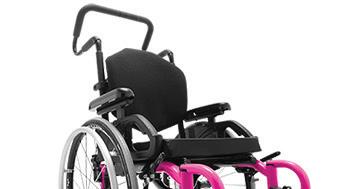


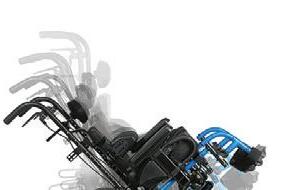






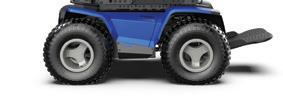
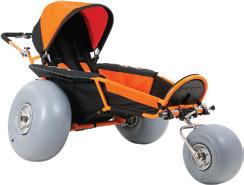

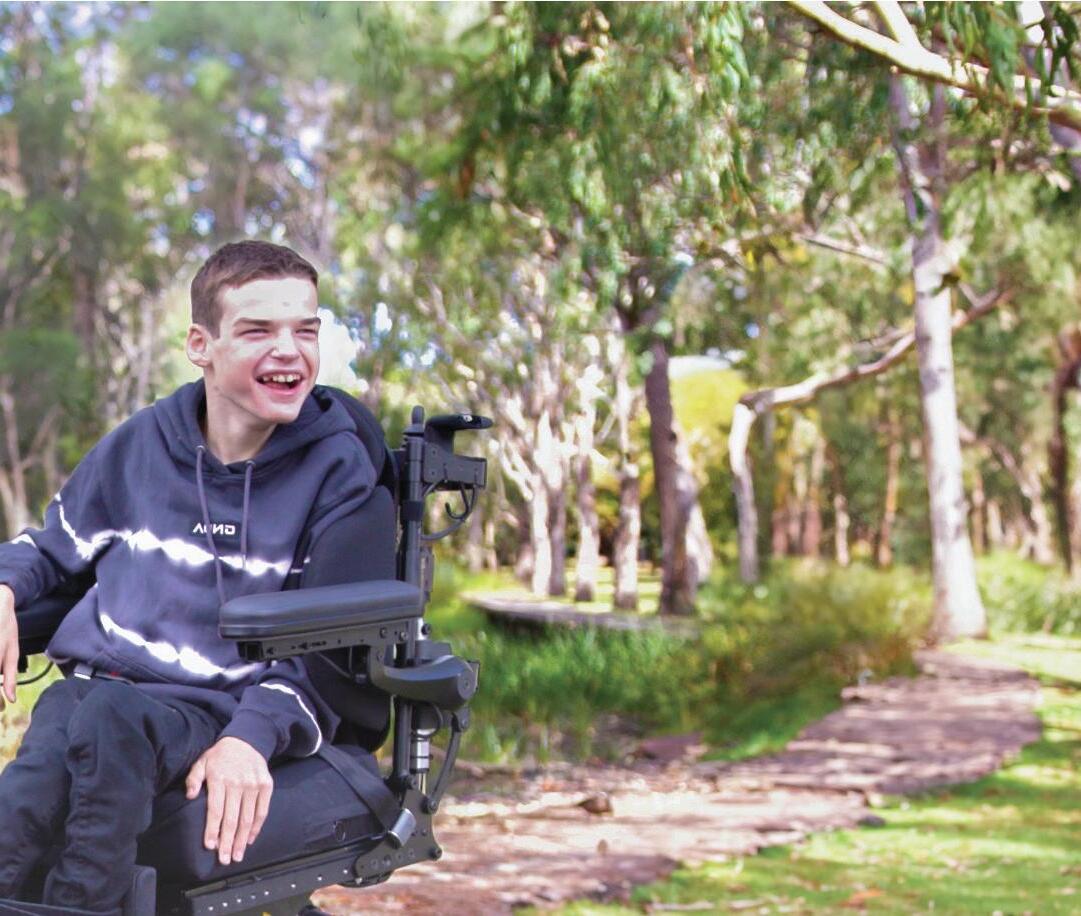
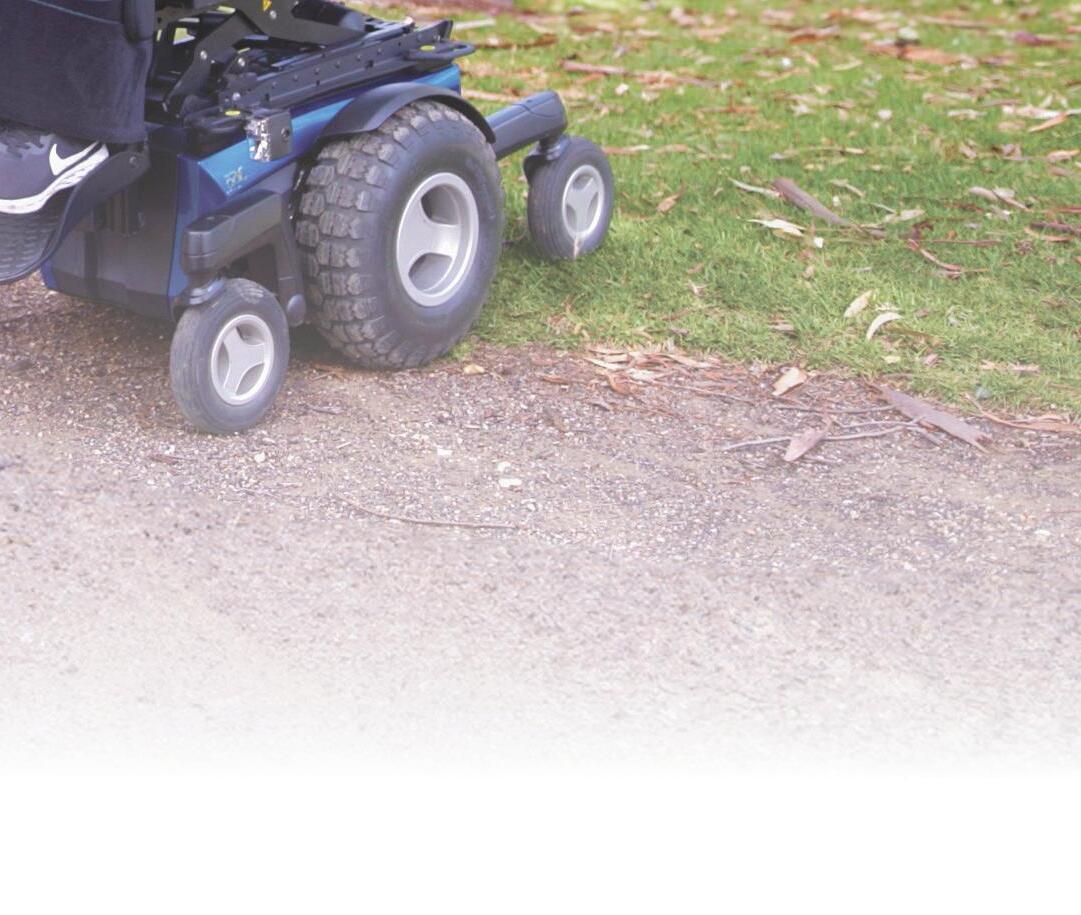
























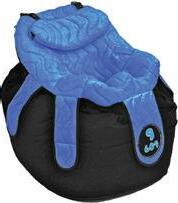
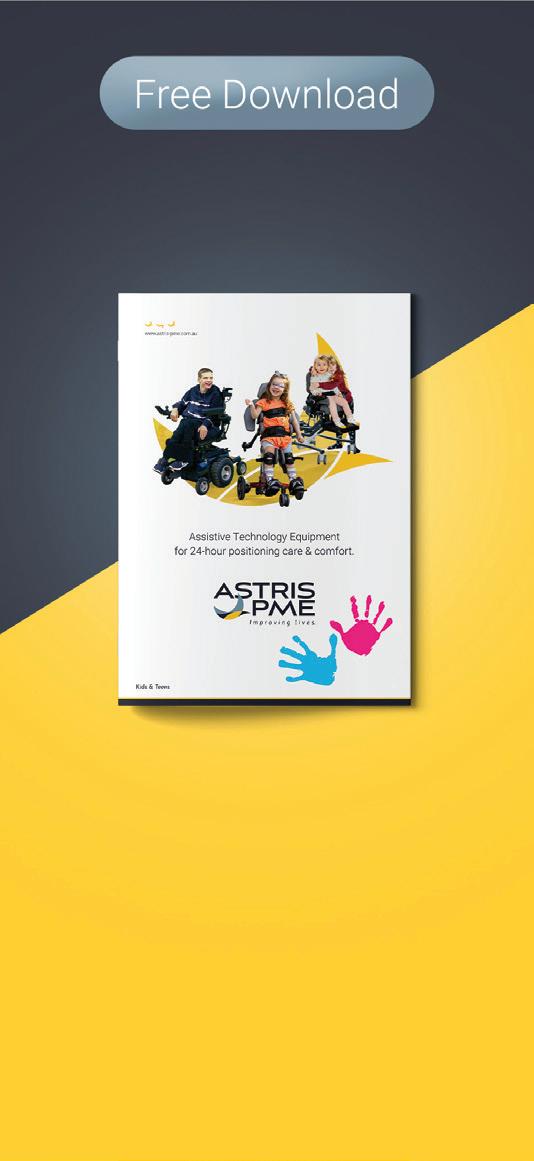

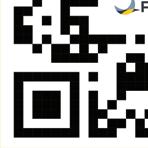

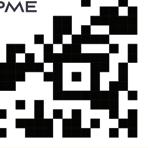










Your toddler’s favourite snack, now in a new tastier recipe!
Gluten-free!
Ideal for self-feeding!
Helps develop the pincer grip!



Thanks to mum, Angela, for answering our questions.
Can you share some insights into Molly’s speech and language development and the challenges she has?
Molly is considered non-verbal/nonspeaking and has a diagnosis of Apraxia of Speech. A simple explanation I share about this is; when an individual has a stroke, they can lose their ability to speak because there has been a disruption to the neural pathways in the brain. Speech therapy helps them reconnect those pathways. However, in Molly’s case, those pathways have never existed, so creating them is an extremely slow process, if they can be created at all.
How does Molly communicate?
Are there alternative methods or augmentative communication tools that have helped?
When Molly turned two, her frustration levels were so extreme I started to learn AUSLAN and taught her to sign. Gradually, more interventions have been introduced over the years; augmentative tools - like a PODD.
Molly has tried Proloquo2Go on her iPad- yet finds it very frustrating and her fine motor skills make it a little more difficult to use.


There’s a lot of ‘charades’ that occurs in our house- a mixture of AUSLAN and ‘acting’, we giggle a lot. I have begun to build a team around her that is learning her communication style so that she has supports that understand her moving forward.
What strategies have helped Molly communicate at school?
She uses different methods of communication. She will attempt to vocalise and then move onto AUSLAN if she’s not understood. Then, if there’s still a communication breakdown she will gesture and point, and if none of these strategies are successful, she will use a PODD as her last resort.
Have Molly’s challenges impacted her friendships or ability to make friends at school?

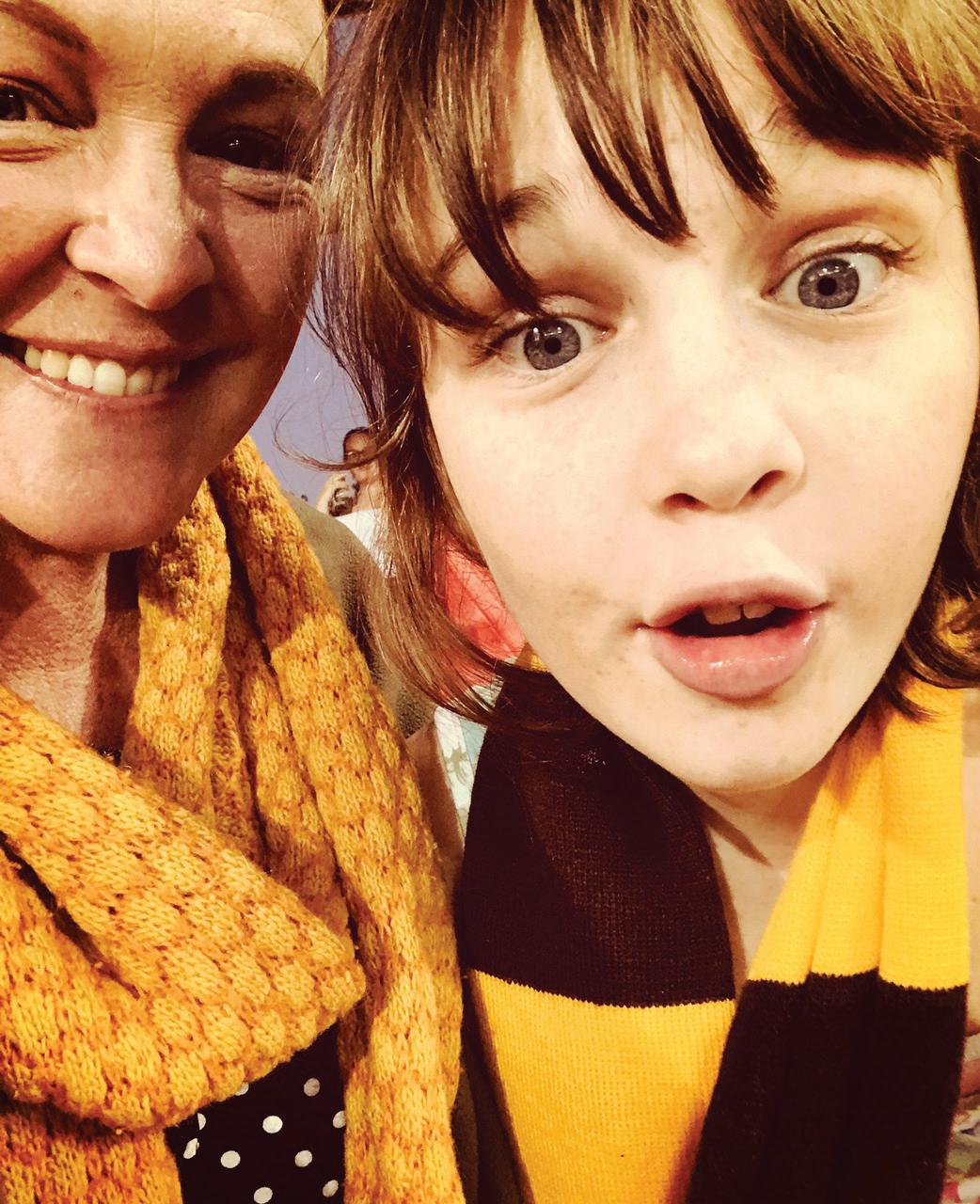
that we will have a friend come over, they will do some craft together and I am the interpreter between the two as they do an activity. It’s incredibly exciting.
What interventions and/or therapies have contributed to Molly’s speech & communication progress?
If you find a great speech therapist, hold onto them tight! Molly went through so many, and when we finally found the perfect fit, her progress was phenomenal. Don’t feel guilty for changing if you feel something isn’t quite right.
What would you like people to know about supporting a child with communication difficulties?
Oh absolutely. Parallel play has been the usual for Molly – playing alongside other kids but not really engaging - but that’s hard as she gets older and has so much more to say. A new strategy we’ve started is
Be patient and observe. You learn so much by just sitting back and watching a child with communication challenges. Watch how their parents interact and communicate with the child - you’ll most certainly learn something. Also, just have fun; there are so many ways to communicate - even through a smile, singing songs with actions, learning simple AUSLAN signs, and most importantly when your kiddo is playing and having fun, that’s where you can integrate new communication techniques for them to try.



We supply these categories and more from all major manufacturers.
Have you ever received a speech report for your child and had a hard time understanding the meaning of some of the terms included?
The following is taken from a guide put together by Small Talk Speech Therapy aimed at demystifying some common speech pathology terms, empowering parents and educators to communicate better with SLPs (speechlanguage pathologists), and aid children’s language development.
The full guide can be accessed at their website here - smalltalkspeechtherapy. com.au/understanding-speech-pathologyterms-a-guide-for-parents-and-educators
Articulation refers to the ability to produce speech sounds correctly. Some children may encounter challenges in articulation, leading to difficulties with pronouncing certain sounds or substituting one sound for another. For example, a child might say “wabbit” instead of “rabbit”. Speech pathologists can assess articulation challenges and provide targeted interventions to improve speech clarity.
Being “stimulable” for a speech sound is being able to spontaneously say a sound correctly or having the potential to say that sound with minimal help. For example, if a child can almost say the ‘r’ sound and, with some guidance, they can get it right, they are stimulable for that sound.
Childhood Apraxia of Speech, often referred to as CAS, is a motor speech disorder that affects a child’s ability to plan and coordinate the precise movements of the articulatory organs (such as the lips, tongue, and jaw) necessary for clear speech production. CAS is characterised by the brain’s difficulty in sending accurate signals to coordinate speech movements.
Children with CAS may have inconsistent speech sound errors, difficulty sequencing sounds, and challenges in imitating speech. Their speech may appear effortful, and they might struggle to produce longer or more complex words and phrases.
Speech intelligibility refers to the degree to which spoken language is understood by listeners. It involves the clarity and comprehensibility of an individual’s speech sounds, words, and sentences. A child with low speech intelligibility is difficult to understand.
Phonological disorders involve patterns of sound errors that affect multiple sounds in a systematic way. Some children might have difficulties with specific sound groups, making it challenging to understand their speech. The full guide from Small Talk outlines all the different phonological processes that may be in play with your child’s speech issues. Look out for terms like ‘Fronting’, ‘Assimilation’, ‘Deaffrication’ and more.
Auditory comprehension is like the brain’s ability to understand spoken language. It’s when you listen to someone talking and the brain processes the words and their meanings to make sense of what’s being said. This skill helps you follow conversations, understand instructions, and respond appropriately.
Linguistics is the systematic study of language structure, including its sounds (phonetics and phonology), word formations (morphology), sentence structures (syntax), and meanings (semantics).
Metalinguistic skills involve the awareness and control of linguistic components of language. Simply put, it implies the ability to think and discuss language. These skills require an awareness of others as listeners and an ability to recognise significant details that indicate changes in speech.
For example, you do not usually speak to a teacher in the same way you would speak to a friend. In addition, you do not typically speak in a restaurant the same way in which you speak in a museum. Noticing what kind of speech is appropriate in various environments with various speakers is reflective of metalinguistic skills.
Multimodal communication refers to the use of various communication methods and channels simultaneously or interchangeably to convey messages and interact with others. It involves combining different modes of communication, such as speech, gestures, facial expressions, body language, sign language, writing, pictures, and technologyassisted tools like Augmentative and Alternative Communication (AAC) devices.
Vocalisation refers to the production of sounds using the vocal cords and the vocal tract. These sounds can include speech sounds, cries, laughter, and various other vocal expressions.
Pragmatics involves the social use of language, including understanding and using nonverbal cues, taking turns during conversations, and adapting language depending on the audience and context. Speech therapists can work on improving pragmatic skills to enhance social interactions. The focus of pragmatic language interventions is to improve relationships, not to teach neurodivergent individuals to interact in neurotypical ways.
Semantics is the branch of linguistics that focuses on the meaning in language. There are various aspects of meaning, including word definitions, synonyms, antonyms, connotations, and the ways words combine
Gestalt Language Processing (GLP) is a form of language development that starts with whole memorised phrases. Gestalt language processing means that a child learns language in longer strings that are related to emotional context. We can call these “chunks” gestalts or scripts. You may also have heard this referred to as “delayed echolalia”.
For example “I need a band-aid” may be a script that a child learns during a moment they have injured themselves and so they received a hug from their caregiver. So, the child later uses “I need a band-aid” to indicate they want a hug rather than literally asking for a band-aid.
Voice disorders can result from misuse or abuse of the vocal cords, leading to hoarseness, pitch problems, or loss of voice. Speech pathologists can assess and treat voice disorders, helping children use their voices effectively and safely.
Speech Pathologists often use the terms “within normal limits” and “delayed”, but what do these mean?
to create meaningful expressions.
As Speech Pathologists, we rely on “norms”, or, averages. Using assessments and observations, we can determine where your child’s skills fit with other children their age. If their skills are about the same as most children their age, we say their skills are “age appropriate” or “within normal limits”. If their skills are below most children their age, we say their skills are “delayed” and we would recommend therapy to build up your child’s skills in these difficult areas.
Phonological Awareness (PA) is the ability to manipulate sounds in words, and are important pre-literacy skills.
Phonological awareness delays might look like:
• Difficulty identifying and making rhyme
• Difficulty identifying the first, last or middle sound in a word
• Difficulty breaking words up in to their sounds
• Difficulty identifying syllables in words
• Difficulty changing sounds in words
At Small TALK Speech Therapy, we help children find their voice so they can connect with others in their world. Discover our range of engaging visuals and resources in our online shop, designed to support and enhance your child’s communication.
Newcastle, NSW
smalltalkspeechtherapy.com.au


We all communicate in a range of ways. To share messages, understand information, form connections, and build relationships with others. We may use speech, gestures, sign language, body language, movement, eye gaze, pictures, symbols, and text.
Some children with communication disability or difficulty, may need additional support to develop speech, language, and social communication skills. They may benefit from using Augmentative or Alternative Communication (AAC). Some types of AAC involve the use of communication aids, like books, boards, cards, or speech generating devices. We call this ‘Aided AAC’. Other types of AAC rely just on communication using the human body, like facial expressions, body language, gesture, and manual signs. This is called ‘Unaided AAC’. Different types of AAC can be used together to provide a person with a range of communication options
that best suit them. This is a multimodal communication approach.
In this article, we’re going to explore Key Word Sign, an unaided form of AAC.
Key Word Sign (KWS) is an unaided AAC strategy designed to help children and adults with communication difficulties to understand information and express their message to others. Speech and signs are used together. A full, grammatical sentence is spoken and signs are added to the key words. So, a person hears and sees a message at the same time. For example, in the sentence “It’s time to go to school” you might sign [time], [go] and [school] as you say the sentence. It could look like this:


Key Word Sign is not a language. It is a communication strategy that draws attention to key spoken words, using visual signs. It is a simplified way of signing that follows spoken language word order.
Key Word Sign is used in many countries around the world and is called different things, for example in the UK it is known as Makaton. In each country, signs from the local sign language are used along with speech.
In contrast, sign languages such as Auslan (Australian Sign Language), are full and rich languages with their own unique rules for production. Sign languages are an integral part of the linguistic and cultural identity of people who are Deaf. When you learn Auslan, you are learning the language of the Deaf community of Australia
Key Word Sign is used by people of all ages, who experience communication disability or difficulty.
For young children with a speech and/ or language delay or disorder, key word sign can offer a means of communicating whilst speech and language skills develop. It can help facilitate the development of speech and language, and promotes social interaction skills like looking, listening, sharing and turn taking.
Figure 1. Example of Key Word Sign.
For school age children, key word sign may be used as part of a multimodal communication approach to support speech, language, social interaction, learning, participation, and inclusion. Other forms of Augmentative and Alternative Communication (AAC) such a communication books, electronic aids or visual supports may also be used.
Some adults with intellectual disability, autism, physical disability, and other sensory disabilities may continue to use KWS throughout their lives. KWS may also be used at times when a person has had a stroke or brain injury and needs access to an immediate, visual communication strategy to share needs and wants and support understanding.
Whatever the age of the person using KWS as a communication method, the communication partners around that person are important.
It is vital that friends and family members learn to use KWS, to provide an accurate model of signs and to help children and adults expand their sign vocabulary. Teachers, aides and other support workers in schools and adult services also need to use KWS to model communication with signs, and to create a signing environment.
Research shows there can be a range of benefits from using a key word sign approach to support communication. Some of these include:
Auditory and visual support for communication
Using both speech & sign when modelling means the person has opportunity to both hear and see what is being communicated.
Aids understanding
Using KWS and gesture helps us to speak slower, use shorter phrases or sentences and simplify our language.
Helps develop vocabulary and language skills
To be able to develop language skills people need to be able to use more words (increase vocabulary) and to combine them in a way that makes sense (language skills). Key Word Sign and gesture helps children and adults develop and use language in a way that doesn’t rely on speech.
Gestures are an important part of developing communication for young children and are often used before spoken word attempts, e.g. pointing and waving. Research shows that using Key Word Sign will not stop children from speaking if that is possible for them.
At any age, using both speech and manual signs can offer a way to clarify speech that may be unclear or unintelligible.
So, are you interested in learning more about Key Word Sign? Come along to a workshop or get started with some Key Word Sign resources.
In a Key Word Sign Basic Workshop, you will learn the principles of a key word sign approach and come away with a core vocabulary of helpful signs that you can use straight away. Delivered in a range of formats including in person, online and via eLearning, a group workshop is a great way to get started with key word sign and meet new people who are also beginning their journey. All are welcome in key word sign workshops and groups will often include a diverse mix of people including parents, family members, teachers, allied health professionals and service providers.
To learn more about Key Word Sign workshops you can visit the Key Word Sign Australia website: kwsa.org.au/training/.
There are many key word sign resources available to purchase or download. From books and posters to downloadable printouts and more. When selecting a key word sign resource, it is important to ensure that the signs being used with the key word sign approach are Auslan signs (Australian Sign Language). Some resources available in Australia use American Sign Language (ASL) or British Sign Language (BSL).
You can find KWS resources using Auslan signs at:
• Key Word Sign Australia kwsa.org.au/resources
• Sign Planet signplanet.net/
• Twinkl Australia twinkl.com.au
• Sunshine Sign and Sing sunshinesignandsing.com.au/
Some training and resources may be eligible for purchase on the NDIS. You can read more about key word sign and the NDIS here: kwsa.org.au/ndis
By Leigha Dark Key Word Sign Australia
Download a free Key Word Sign resource here.

Purchasing assistive technology (AT) for your child or young adult can be a little daunting, especially when it’s a significant investment. You want to be confident the item is right for their needs and, of course, good value for money.

Experienced Leap in! plan manager
Tabitha is on hand to help. Tabitha answers some frequently asked questions about high cost AT including communication devices so you know what to expect if you’re exploring options for someone in your family or care.
What high cost assistive technology may be suitable for purchase under an NDIS Plan?
High cost assistive technology under the NDIS is any item of AT that costs more than $15,000. By its very nature, high cost AT tends to be complex. It’s sometimes custom-made or tailored for the individual.
High cost assistive technology includes higher cost augmentative and alternative communication devices (AAC), custom wheelchairs, prosthetics, ventilators and some specialised patient lifts or hoist systems.
How can I get high cost AT included in my child’s NDIS Plan?
An occupational therapist (OT) or physio can talk to you about the kinds of AT that might help your child meet their goals. If high cost AT is required, a professional AT advisor will need to complete an AT assessment. The NDIS may include funding in your child’s plan for an AT assessment if you don’t already have one.
The assessment looks at how each feature of the AT helps with building skills and independence, and how it
relates to other types of support. The NDIS has templates to guide assessors through this process, which are available on the NDIS website under the For Providers section.
The AT assessment is submitted to the NDIS with an itemised quote from one or more providers for the item. If approved, the funds are added to the Capital supports budget in the person’s NDIS Plan.
Does a high cost AT quote need to include the cost of other items, like delivery?
Yes. The quote should cover everything associated with the purchase, including delivery, set up costs, and any customisation required. It should also include the brand name and model number.
Before buying, can I use my child’s NDIS funding to trial assistive technology?
With so many different brands and options for AT, you’ll sometimes want to test an item before buying or renting. Some providers will let you try a product at no cost.
If not, you can use your child’s NDIS funds to pay for a trial. If your child is on a PACE plan, they will need funding under the new Capital supports - Assistive Technology, maintenance, repair and rental budget to trial high cost AT. If they’re on the old style or legacy plan, you may be able to use Core supports flexibly to trial the item.
Details about the outcome of any trials need to be included in the AT assessment.
My daughter has a high cost Augmentative and alternative communication (AAC) device approved and included in her NDIS Plan. Do I have to cover the cost upfront?
If your daughter has a plan manager like Leap in! the provider can generally send the invoice to your plan manager to process the payment from your daughter’s plan so you’re not out of pocket.
Did you know you can ask for AT at any time?
That’s right! You don’t need to wait for a plan reassessment. As your child or teen’s goals and needs are constantly changing, there is in-built flexibility in the NDIS for AT requests.
If your child or teen’s needs have changed, you can contact the NDIS at any time. For low or mid cost AT needs, the NDIS may choose to increase the funding of supports in a plan without needing a full reassessment. This is called a plan variation.
It’s worth noting that while an AT request can be submitted at any time during your child’s plan, your request may initiate a plan reassessment by the NDIS.
If your daughter’s plan is Agency managed, the provider needs to be NDIS registered. The usual process applies where the provider submits the claim for payment through the NDIS portal.
If you self manage, there are two options:
• Make a payment request through the NDIS. Money from your daughter’s NDIS Plan budget will be paid into your account. You can then pay the provider.
• You can pay for the item upfront, then submit a claim to the NDIS for reimbursement.
What about mid cost AT? Can you please explain how the new $15,000 limit for AT works?
If you have relevant evidence and the funding in your plan budget, the NDIS will automatically approve purchases of mid cost AT valued between $1,500 and $15,000. No quote is required.
However, you need to submit written evidence for items costing more than $1,500. This can be done by obtaining a letter or report from an AT advisor outlining the item, how it will assist and why it is the best value for money.
Does “higher risk” AT refer to items that cost more?
Good question! The NDIS has two “product” risk categories for assistive technology: low risk and higher risk. While higher risk technology is often more expensive, this is not always the case.
Higher risk items are generally more complex and often require personalised setup. For this reason, advice from an AT advisor or assessor is necessary before purchase, regardless of the cost. The NDIS will not fund some high risk items such as trampolines or swings.
What should I do with high cost AT funded by the NDIS that is no longer needed?
If you have purchased the equipment, you can take it to a service in the community that accepts and refurbishes used equipment or donate it to charity. If it is under a lease agreement, you need to return it to the provider. Depending on the item, you may also be able to sell it privately.


AAC products come in both low-tech and high-tech to provide kids with strategies to express themselves and communicate. Take a look at some of the options here and work with your child’s speech therapist to find the solution that best suits your child.


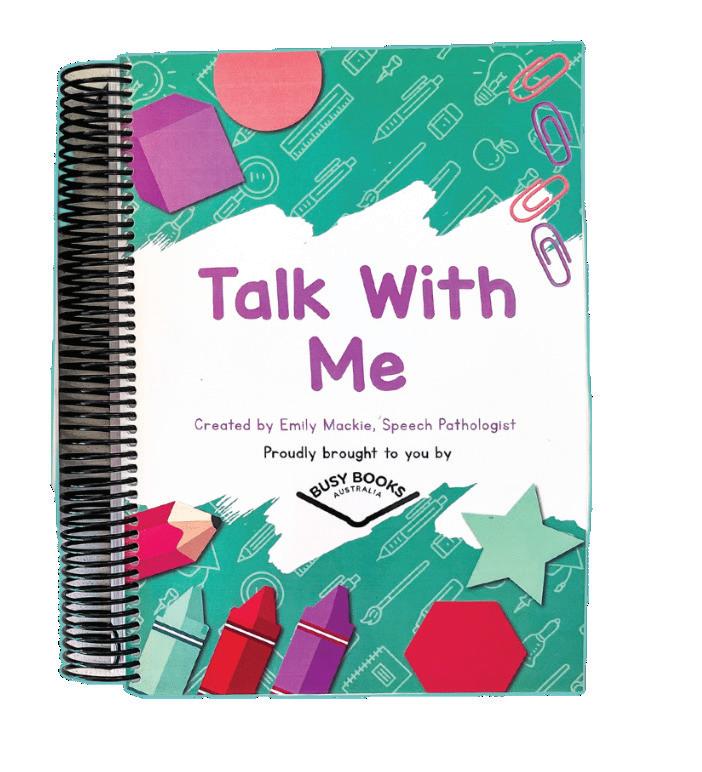
This flexible communication app is both easy to set up and use
TD Snap is a flexible communication app supporting individuals with speech and language disabilities. Accessible via touch, eye gaze, and scanning, this symbolsupported software is both easy to set up and use. mytobiidynavox.com
Busy Books, expertly designed to enhance expressive and receptive language skills in children. These engaging Busy Books offer activities that foster communication, understanding, and emotional bonding. Ideal for anyone nurturing a child's speech development journey, they're an invaluable tool for growth and connection. $249.95 for bundle // busybooksaustralia.com.au


Second Scout's Little Agenda Wooden Weekly Visual Schedule is designed to help children see what is happening during the week using pictures. It shows the sequence of activities or tasks, providing a visual guide for individuals to follow and to help gain independence. RRP $139 // mydiffability.com.au
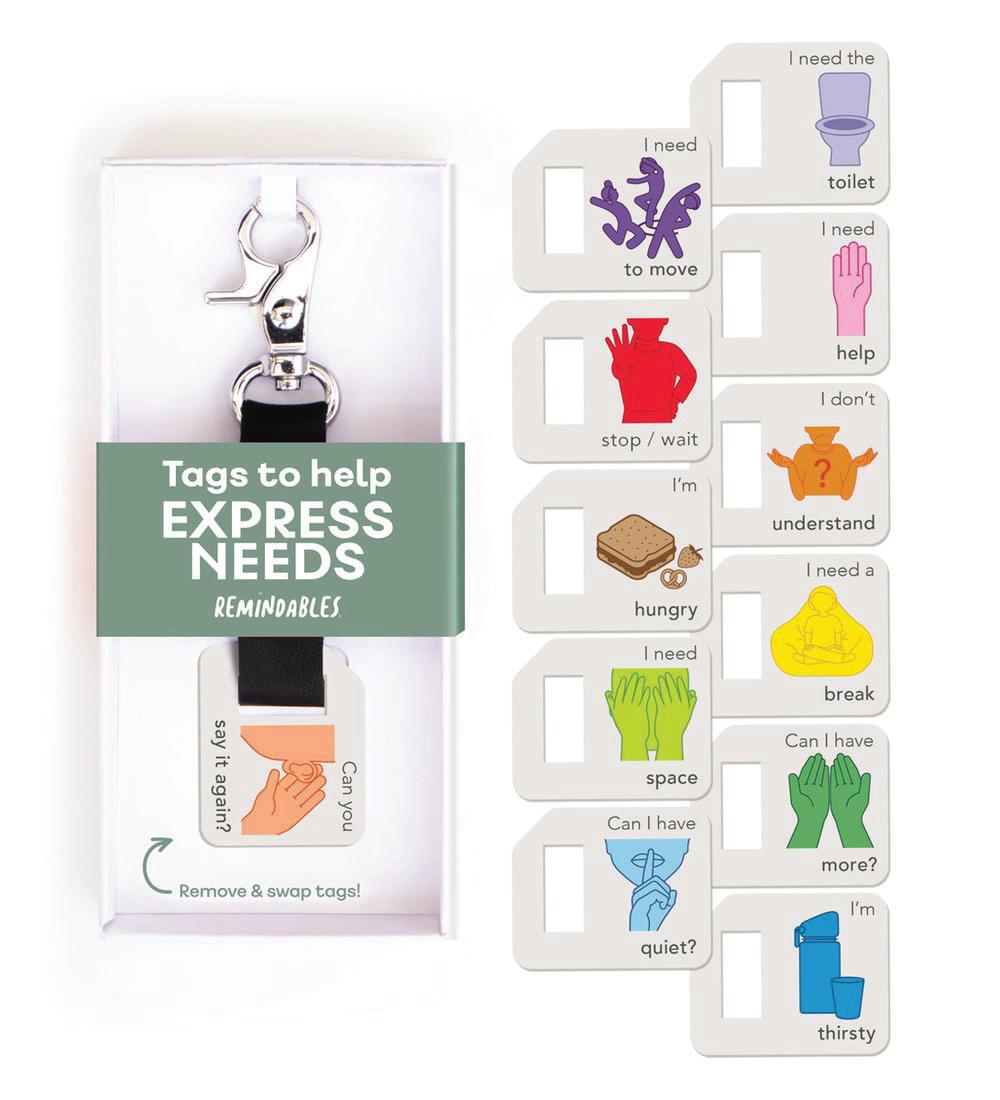
The Remindables collection of communication tags aims to help kids communicate important messages to others. Developed for kids who are nonverbal, have limited language or find verbal communication difficult, the set comes with 12 tags to support communication needs. Durable and weather resistant. RRP $28 skillbuilders.com.au

The Tobii Dynavox I-Series+ is a dedicated communication device that combines eye-tracking technology with AAC capabilities. It allows individuals with limited or no motor control to communicate by using their eyes to select symbols and phrases on the device's screen. It meets a range of communication needs, and projects your voice loud and clear thanks to powerful speakers. POA // linkassistive.com

A common high tech AAC device is an iPad. iPads use the touch method of access, have many compatible software such as Proloquo2go and LAMP Words for Life. RRP from $546.99 // assistivetech.com.au


Something to Say wristbands do just that! The wearer can indicate they have something to say by showing their wristband and indicating they need their AAC device.
From $5 // novitatech.com.au
The Tri-fold Literacy/Choice Board is a self-standing board to use with reading, scheduling or choice-making activities. It features a selection of options that kids can point to, helping them make choices in different situations. It also promotes sentence strips, stories and more. From $130 // spectronics.com.au


The AAC mealtime mat by Two Way Street guides kids at mealtimes to develop their communication skills to talk about their day, meal, likes and dislikes. Four colours to choose from. RRP $50 // twowaystreet.com.au

TouchChat is a full-featured communication solution for individuals who have difficulty using their natural voice. Words, phrases and messages are spoken with a built-in voice synthesiser or by playing a recorded message. This version of TouchChat is bundled with WordPower™ assistivetech.com.au


The acquisition of speech and language is a pivotal developmental stage for our children, moulding their ability to communicate, articulate thoughts, and foster literacy skills.
Handwriting plays a significant part in many of the academic, work and leisure tasks people engage in during childhood and into adulthood. However, there are many reasons why children may require additional support to build handwriting skills such as difficulties with motor skills, visual perception skills, or even speech and language delays.
When a child needs additional support with handwriting it can impact their ability to develop other skills such as literacy, reading comprehension and written expression. Cognitive load theory explains that by simplifying and automating some cognitive processes (eg. typing or handwriting) we can free up space in the brain for higher order thinking. Hence, providing alternative methods for written communication can support children to reach their fullest potential. Alternative methods do not need to be seen as a replacement for handwriting but as a way to support learning and development.
Some alternative methods of written communication include typing, voice-totext and scribes. Each child’s individual strengths and areas of support will need to be considered when choosing an appropriate method of written communication. For example, children with clear speech and language may find voice-to-text suitable however difficulties with articulation or pronunciation can present as barriers to using this type of software.
Typing is becoming an increasingly common life skill with many schools and workplaces requiring the use of computer skills to complete tasks. Whilst children are often exposed to explicit typing instruction in later years of primary education, research suggests that formal typing instruction should begin as early as kindergarten to ensure that children develop strong foundations in typing skills.
The development of typing skills occurs in three stages, in accordance with motor learning theory.
Stage 1: Cognitive Stage
At first, children require explicit instruction and feedback to break down the individual components required for typing. This includes pre-typing exercises with emphasis on fine motor skills such as finger isolation and dexterity, letter identification and hand positioning. These skills are essential to ensure strong foundations to commence typing. Throughout these activities, children will require extensive practice as well as specific visual and verbal feedback.
Stage 2: Associative Stage
This stage focuses on continued practice to refine skills and reduce errors. Here children can be orientated to the home row for touch typing and begin develop their muscle memory for finger movements required for common letters. It is important that in this stage we are providing children with specific feedback regarding accurate finger placement and finger movements to ensure that correct motor patterns are being reinforced in the brain. During this stage, computer-based typing programs can be used to encourage practice of typing skills in an engaging way!
Stage 3: Autonomous Stage
In the final stage, the skill becomes more autonomous requiring less cognitive effort. Hence, children are more fluent in typing and can switch their attention to their writing content as they are not required to place as much cognitive energy into the motor aspect of keyboarding. Here you can notice children becoming confident and faster in typing. It is important to note that it is expected that typing skills are as fast as handwriting.
By embracing alternative methods of written communication and offering comprehensive support, we can empower children to reach their fullest potential and overcome any challenges they may face with handwriting.
By Mahek BansalIf your child requires support with their handwriting or is investigating alternative methods of written communication to support their learning you can reach out to Occupational Therapy Helping Children at hello@occupationaltherapy.com.au | 02 9913 3823 | occupationaltherapy.com.au

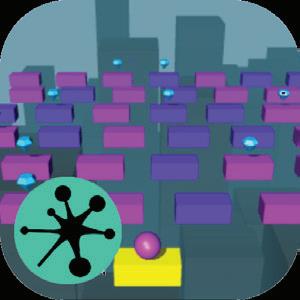










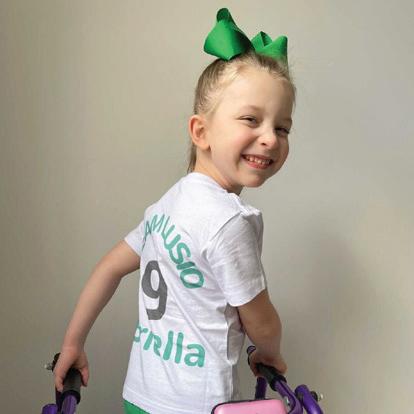


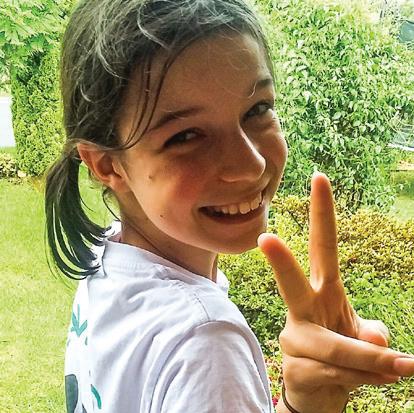







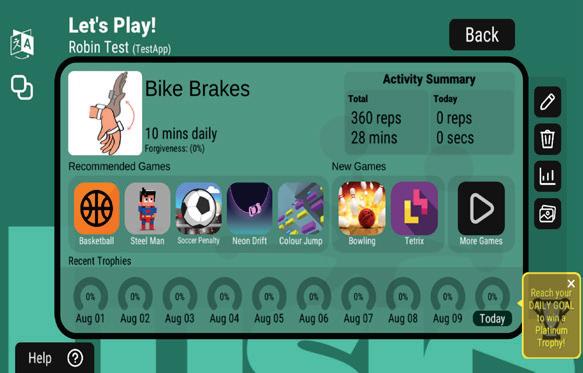



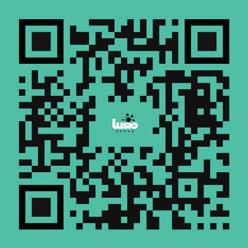







Frame running is revolutionising the lives of children with mobility difficulties, giving them the opportunity to go fast – and have fun doing it.




Ever wonder how elite athletes get their start? It’s a combination of opportunity, suitable gear, supportive mentors, and self-belief – and as seven-year-old Charli zooms along, it’s clear she’s got all the ingredients for success in the up-and-coming sport of frame running, which is becoming a popular para sport in Australia and worldwide.
While Charli might be a bit young to think about serious athletic pursuits, the independence and mobility she’s gained since being fitted with her PETRA Frame Runner in late January are truly life-changing.
physiotherapy clinic go to the Saturday club, which gives them an opportunity to be part of the community, to join a sport that’s made for their needs.”
Frame running, also called race running, started in Denmark in the early 1990s. Using a custom-built tricycle without pedals, people with impaired balance can move by themselves – and move fast!
Zoe Duong, a physiotherapist on Charli’s team at NAPA Centre Pty, recalls how in 2023, Charli went along to a Sydney-based Saturday morning frame running club hosted by Dejay Medical (dejay.com.au), and took to the frame runner immediately. “Charli found it really interesting, and along with several other girls her age, she was quite excited to continue using a frame runner,” Zoe says. “A number of kids we treat at our
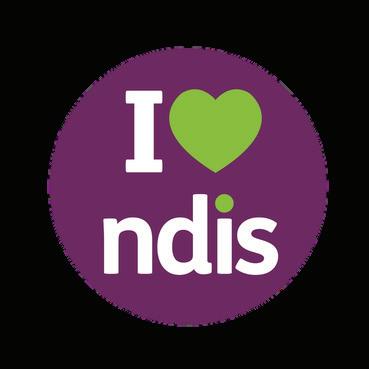


Zoe says that frame runners can be incredibly beneficial to people who have low tone, spasticity, or underdeveloped muscles. “A frame runner is more supportive than a typical walking frame,” she explains. “From an endurance and cardiovascular health point of view, it’s great because Charli can move much faster in her frame runner than she can in a wheelchair or walking frame – it’s designed to move and run. A frame runner promotes greater physical activity and stretches muscles that would ordinarily be tight from prolonged sitting.”
Charli’s enthusiasm for frame running made it clear to Zoe that having her own customfitted frame runner would be beneficial, and that’s where the Australian Lions Children’s Mobility Foundation (ALCMF) came into the picture.
“We want to empower children who
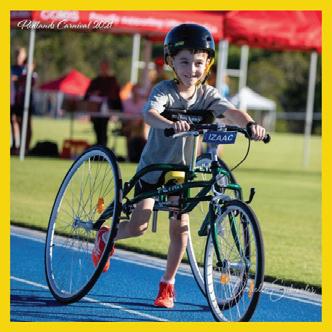

can’t walk without assistance to reach their potential,” explains Gregory English, Chairman ALCMF District 201N5/ Trustee NSW/ACT. “This is one of the most important projects of the Lions Clubs around Australia. The bottom line is, we want to equip kids with anything that will help strengthen their bodies so they can be fit and active – standing frames, walking frames, frame runners.”
ALCMF’s goal is “to provide a walker to every child in Australia who needs one”, and so far, they’ve helped 2,383 kids and raised over $13.4 million for the cause. “Charli’s frame runner will give her the opportunity to participate more independently in school sport, playground games, athletics carnivals; to have mobility that gives her as normal a life as possible,” says Greg.
Zoe and the physiotherapy team at NAPA Centre Pty have helped connect several young people to ALCMF to access equipment that isn’t NDIS-funded, but would benefit their mobility. The process of obtaining Charli’s frame runner was made straightforward by ALCMF, who are committed to removing barriers to access for the mobility equipment they fund by working directly with physiotherapists who best know their clients’ needs.
“The fitting process for Charli’s frame runner was pretty intense,” Zoe says. “We took lots of measurements, then sent them off to Leon and the team of experts at Dejay. Then Leon brought some different-sized frames into the clinic for Charli to try out, and made adjustments so that her frame runner is truly unique and personalised to her body.”
Zoe says it’s important to choose a frame runner size that’s best for the child


in terms of their growth, so they can maximise the time the frame runner can be used, and get the most out of it. “The Dejay team are so experienced in knowing what will work for each child, and working with physiotherapists to ensure the frame is aligned correctly to the client,” she says.
As for Charli, she’s been off and running with her racing-green frame runner for a few months now, and shows great promise of excelling in the sport of frame running, which proponents are lobbying to have included in the Paralympics.
“Seeing Charli’s eyes light up when she
Melbourne’s Maria Strong won Gold in the Women’s 100m T72 frame running event at the 2023 World Para Athletics Championships. “Most frame runners can’t stand and walk that well, let alone run without a frame. I had never been able to run more than a few steps,” she said. “I got on a frame and I was suddenly not at the risk of face planting. I could move reasonably fast. It’s like I’m flying.”
If your child would benefit from mobility equipment like a frame runner, talk to their physiotherapist, who can contact the Australian Lions Children’s Mobility Foundation (alcmf.lions.org.au) to find out about accessing funding.
Local frame running clubs are opening up all over Australia, where frame runners can meet and join up with others in regular activities. For the more serious racers, have a chat to your local Athletics Club about joining their running programme.
realised, ‘Hey, I’m going fast!’ was just brilliant,” Greg smiles. “Who knows – maybe we’ll see Charli competing in the Paralympics for frame running one day!”
For more infomation see dejay.com.au or contact 02 9838 8869 or email therapy@ dejay.com.au
By Katherine Granich

Your perfect Support Worker could be closer than you think.
Amanda didn’t expect to find a Support Worker on a visit to her hairdresser. But she asked the question, and has now employed her hairdresser Zoe as a Support Worker for her two kids.
1. You find who you want to employ and agree pay rates.
2. We take you through all the setup and compliance.
3. We do your payroll (pay, super, tax) and cover insurance.
Like to know more about how this could work for you?

Give us a call on 1300 729 839 or scan the QR code





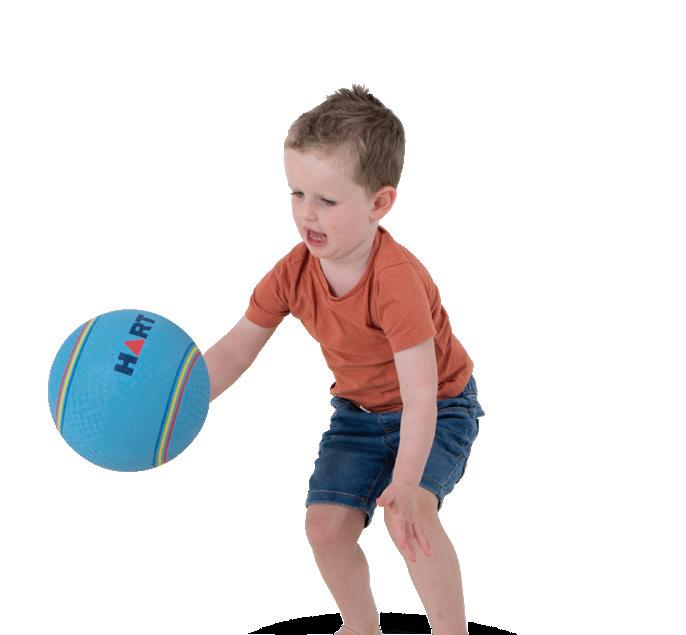
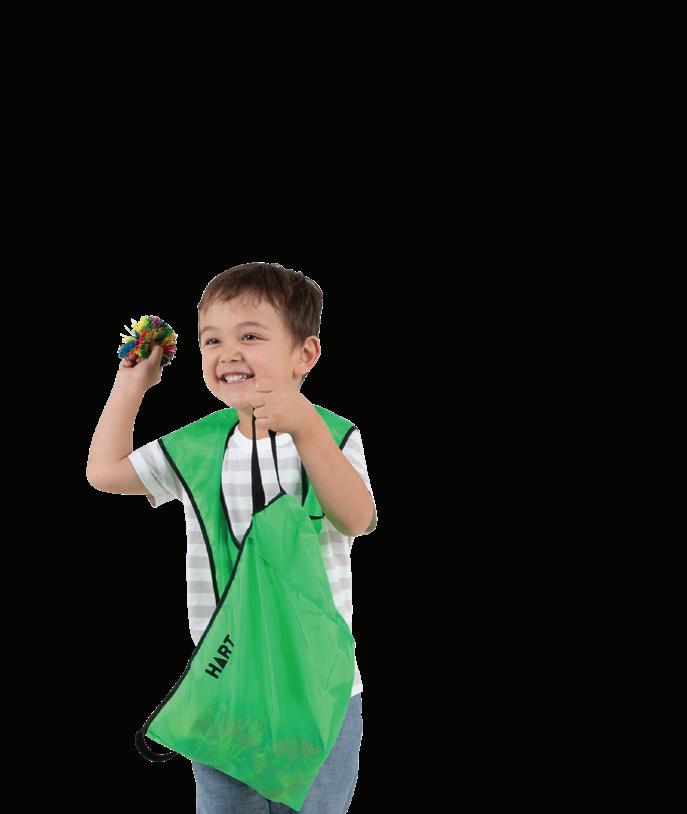




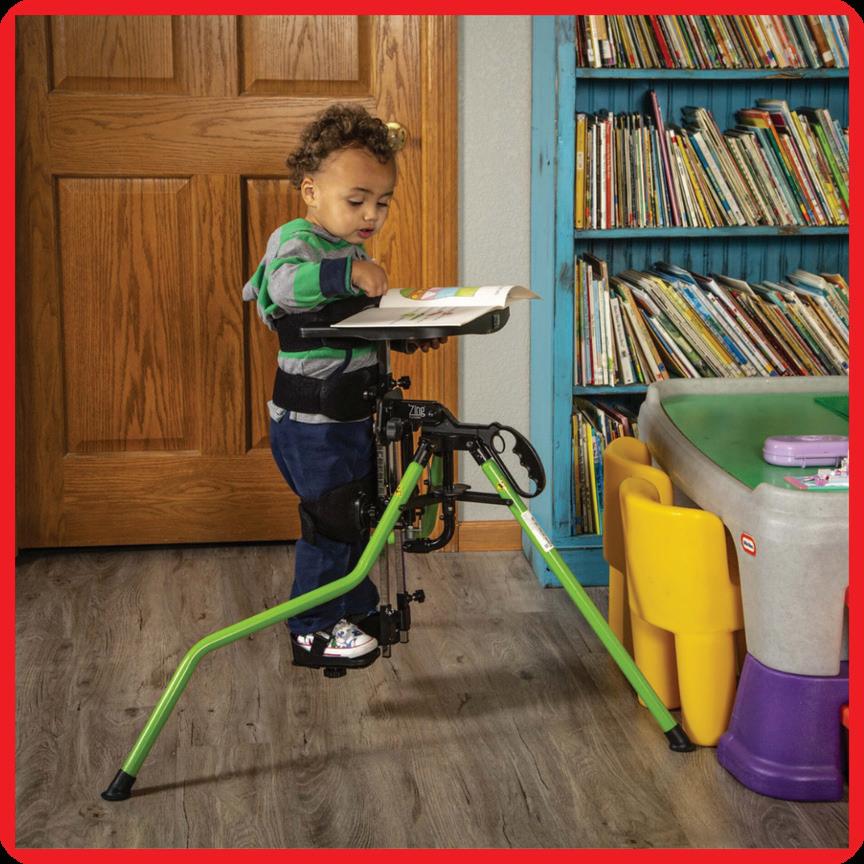

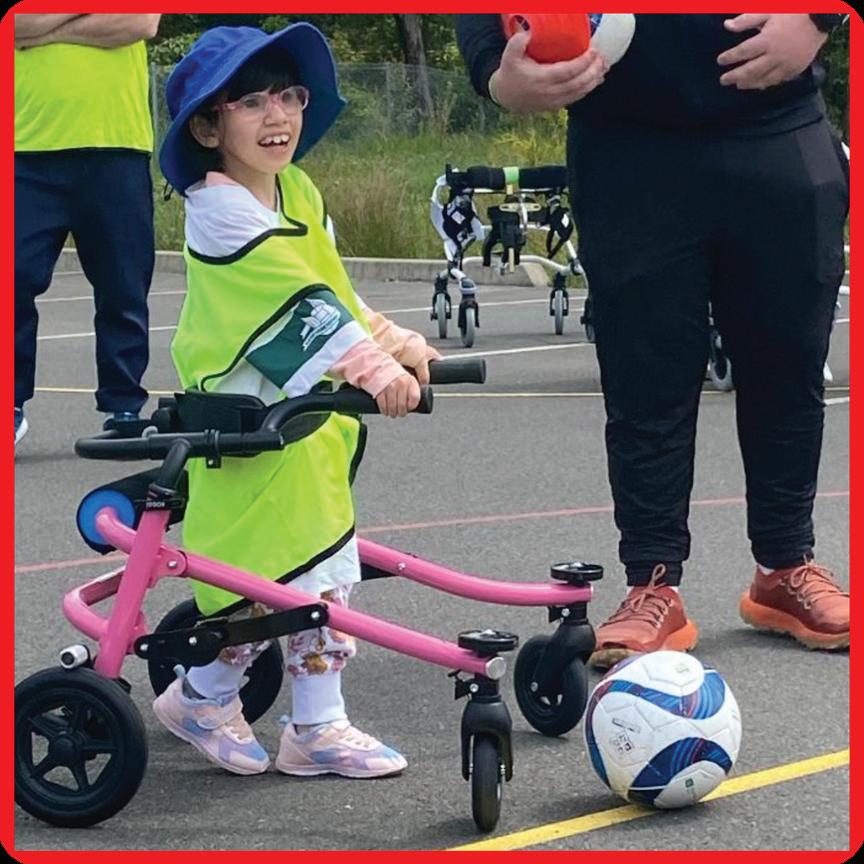
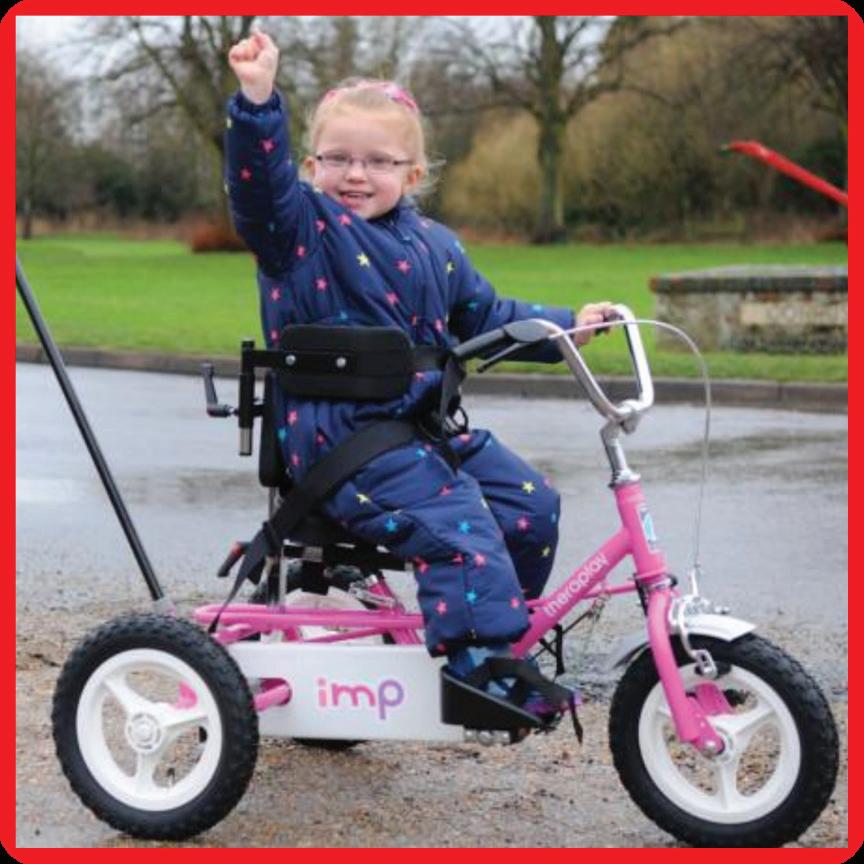






Begin by introducing your child to the fundamental concepts of time. Explain how we divide the day into different parts: morning, afternoon, evening, and night. Use familiar events or activities to anchor these concepts, like meals, playtime, and bedtime.
Other language around time to learn are the concepts of before, after, next, later and until. The days of the week, months and years and also the concept of past, present and future. There are many worksheets and learning resources that can help you with these.
Sand timers can be useful to introduce the concept of time passing and can be obtained in different sizes and durations. Use them for different tasks like brushing teeth, watching tv etc and then check the time passed by against a clock.
In terms of actually telling the time make a start by familiarising your child with the numbers on a clock, then move on to the hands and what they mean.
Breaking time down into quarters and halves with visuals is a great way to begin and there are really good time teaching clocks that can help.
Use a clock with large, clear numbers and hands that are easy to manipulate. Show your child how the hands move as time progresses and connect these movements to activities they are familiar with.
Visual aids can play a crucial role in helping children with disabilities
Teaching our children the concept of time and how to tell the time can be a challenge and while the task may seem daunting, it’s an important step on the way to independence - at home, in the community and at school. With a bit of patience, creativity and the right tools at your disposal, you can help your child develop a meaningful grasp of time. Here are some tips to assist you along with some useful online resources for tools, templates and games you can use.
comprehend abstract concepts like time. Consider using a daily schedule with pictures representing different activities. This visual representation will provide your child with a tangible way to understand the sequence of events throughout the day.
For time-telling - visual cues such as colour coding blocks of time or the hour and minute hands can be useful. See those aforementioned time-teaching clocks for how this concept is put to good use.
Incorporate discussions about time into your daily conversations. Talk about
upcoming events, how long activities will last, and when special occasions will occur. For example, if bedtime is at 8:00 pm, 15 minutes before you can say, “Bedtime is in 15 minutes.” You can then set a timer for 15 minutes to show the time passing.
You can also relate time to your child’s interests, like how a favourite TV show starts at a certain hour, or how it takes a certain amount of time to make a cake. You can also practice timing different events like singing a song, putting shoes on, making lunch etc.
Your child might need a little more time to grasp a concept like this. Be patient and willing to repeat explanations and activities as many times as necessary. Consistent reinforcement will help their understanding over time.
Analogies can be powerful teaching tools. Explain the passage of time using relatable comparisons. For instance, you can compare an hour to a specific activity, like the time it takes to watch a favourite movie or play a game.
An analogue clock might just be too difficult for some children and that’s absolutely ok. Digital time may be easier for your child to understand. And while we’re on the subject of technology - timers, alerts and reminders on watches and phones are all fabulous tools to help your child stay on track of what’s happening and coming up throughout the day.
Acknowledge and celebrate your child’s progress, no matter how small. Learning about time is a gradual process, and each milestone reached deserves recognition. Positive reinforcement boosts their confidence and motivation to keep learning.

Help your children learn to tell the time with these fun card games. The cards can be used to play various games including snap, matching pairs, buddy-up and bingo. sensoryconnect.com.au

“Seeing” time elapse makes the Time Timer PLUS ideal for teaching children the concept of elapsed time. sensorytools.net

This good looking 33mm diameter watch will help your child master telling-the-time using the unique EasyRead 3-Step Teaching System. The large clear dial shows every detail your child needs and the hands show them which numbers to read. It’s as simple as 1-2- 3. sensoryoasisforkids.com.au
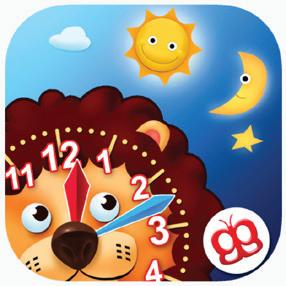


The EasyRead Time Teacher Wall Clock is the ideal first clock to help children learn to tell the time at home or school. The clear design and simple 3 step teaching system make it very easy for children to learn to read the time in terms of ‘minutes past’ and ‘minutes to’ the hour. The silent sweep movement also ensures there’s no ticking which some children find distracting or annoying. thetherapystore.com.au



The education.com website has a host of simple worksheets that you can download to work through with your child at your own pace. You’ll also find several types of monthly calendar, days of the week, and months of the year worksheets. education.com
Beautifully illustrated with many adorable clock designs and accompanied by encouraging voice-overs and cheerful background music, this app creates a kid-friendly environment to enhance their learning experience. apps.apple.com
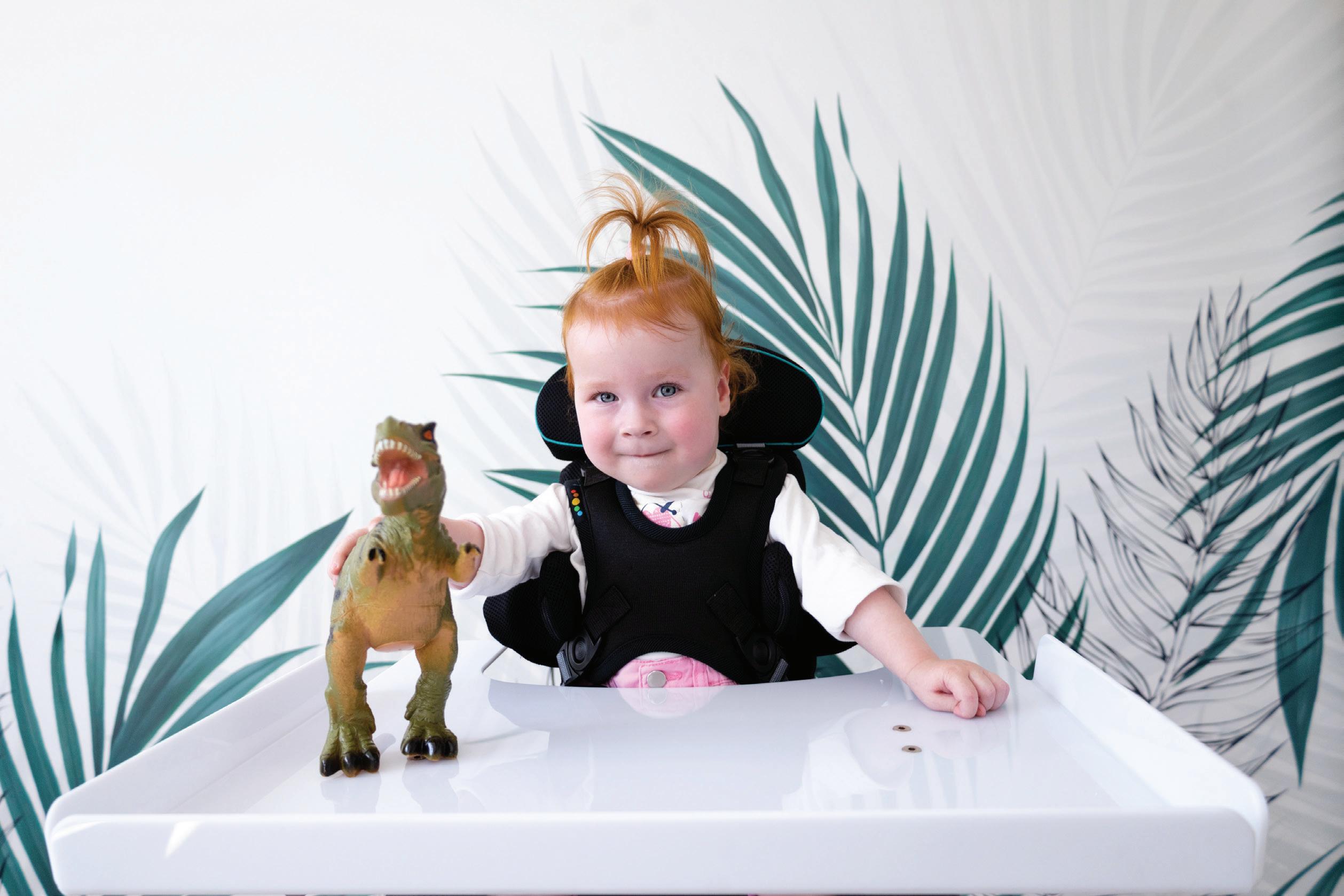
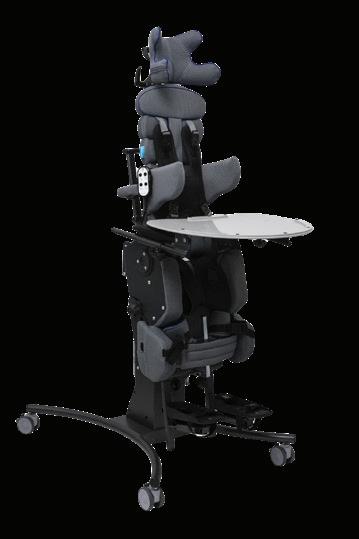


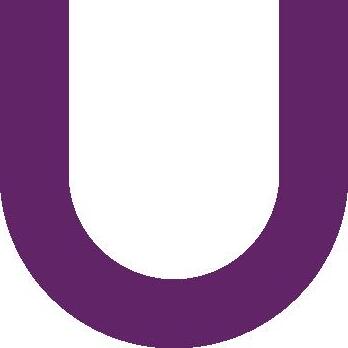




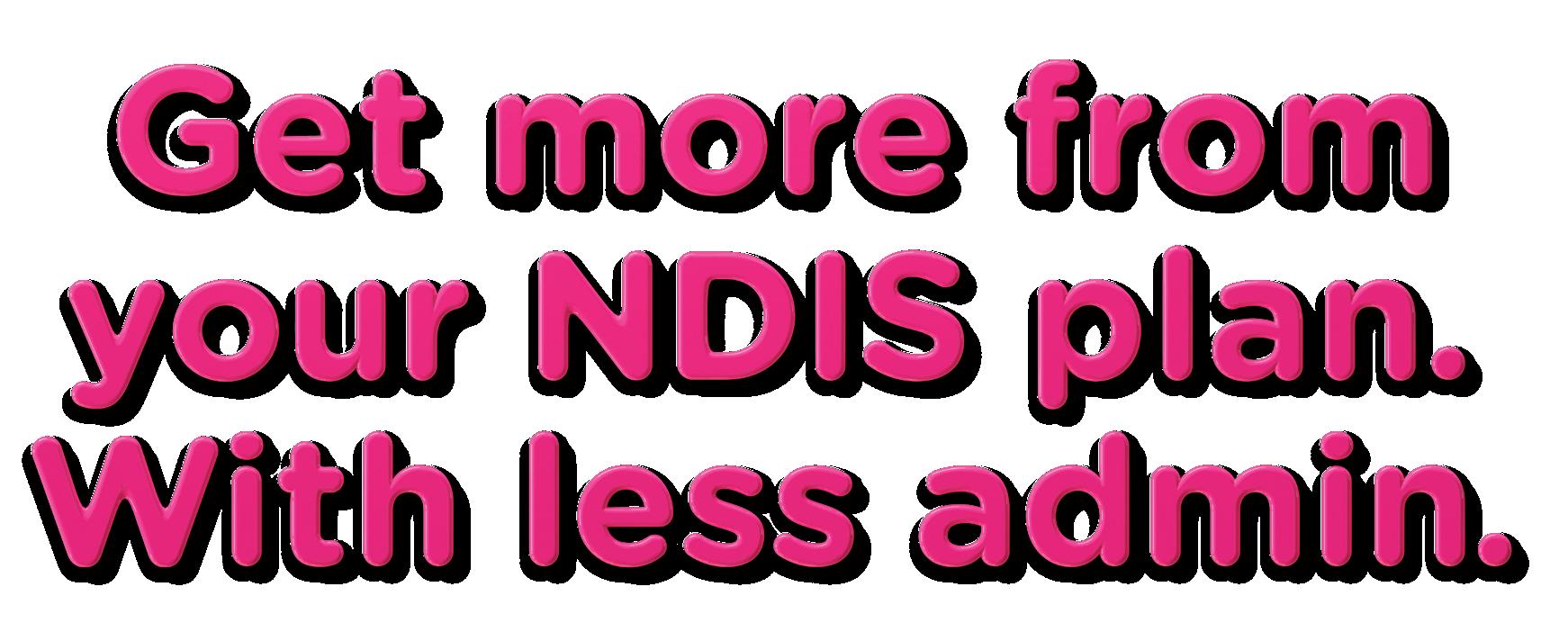


What are the career prospects for our young disabled people, and how can we work to improve the inequities?
A new pilot program aims to address this.
What was your first job?
Babysitting, newspaper delivery, cutting lawns?
More than likely you were paid at a rate that wouldn’t touch the national minimum of the time (it’s currently $23.23), but it’s usually seen as a rite of passage while you’re learning the ropes, or doing what others might think
of as a low-skill job. While it’s debatable whether it really is okay to underpay kids, for a long time, society has deemed it perfectly acceptable to continue to pay entry-level (or less) wages to many disabled young people and adults.
“Open” employment options with award wages are theoretically open to everyone, but many disabled people, particularly
those with intellectual disabilities, are in “closed” employment like ADEs.
“ADE” stands for “Australian Disability Enterprises” and its intention is to provide support for disabled people who need it in order to work.
ADEs might sound sensible and even helpful – they’re even funded by NDIS – and they are valuable to many, but the
down side is that people who have them are typically paid far less than the national minimum wage. ADEs also tend not to provide advancement opportunities or a chance for disabled workers to develop their skills beyond learning a very specific task. While there are some new NDIS rules around how ADEs can be more flexible while helping disabled people find open employment roles, the disconnect has been around the availability of these roles in the first place. Anecdotally, employers still shy away from hiring disabled employees, or investing the time and resource into creating or modifying roles to be disability accessible.
“There is an over-representation of people with disability in entry-level roles and a lack of career advancement opportunities for people with disability into leadership roles, as well as a lack of representation of people with disability on company boards,” says Amber O’Shea, Head of Strategy for the Australian Disability Network.
Her organisation, in partnership with the Business Council of Australia (BCA) and the Department of Social Services has recently launched the Career Pathways Pilot 2023-2025, funded by the Australian Government Department of Social Services. And perhaps most impressively, the Australian Disability Network will run this pilot program in conjunction with BCA members who are among our largest and most visible businesses – Coles Group, Compass Group Australia, Kmart & Target Australia, and Woolworths Group.
Hotel Etico (hoteletico.com.au) in Mount Victoria, NSW, was opened in February 2021 as Australia’s first social enterprise hotel. It’s staffed by hospitality trainees with intellectual disabilities who are supported by industry professionals, and runs the Independence Program, which provides work, training, and live-in opportunities which provides a pathway for its employees to transition to open employment. Targeting people aged 18-35, so far the hotel has hosted five cohorts of trainees, 17 of whom have graduated – and 100% of graduates have secured open employment.
of experience and skills of people with disability that have been overlooked in the past.”
50% of Australian managers have never hired or worked with a person with a disability.
The major employers who have come on board for the initiative are not only enthusiastic about their participation, they also all have a history of employing disabled people – so their commitment to the pilot programme isn’t just lip service. Martin Smithson, General Manager: Meat, Deli and Seafood, and the chair of Coles’ Accessibility Steering Committee, said disability inclusion is an integral part of the Coles Group strategy – in fact, 7.6% of Coles’ team members identify as disabled. “Coles is proud to have many leaders in our team who live with disability. Often disability employment is stereotyped as an ‘entry level’ opportunity,” he says. “We are committed to continuously supporting the development of our talent and providing them with tools to progress their careers at Coles.”
ACCORDING TO THE AUSTRALIAN BUREAU OF STATISTICS:
Working-age people with disability have a lower employment rate (48%) than those without disability (80%).
41% of employed working-age people with disability work part-time, compared with 32% of those without disability.
54% of employed working-age females with disability work part-time, compared with 28% of their male counterparts.
“The Career Pathways Pilot is entirely co-designed and led by people with disability and focuses on career progression which challenges middle managers’ and senior leaders’ pre-existing biases and perceptions that people with disability are only suited to entry level roles,” O’Shea says. “Through the 18-month pilot we will work with some of Australia’s leading employers to create opportunities that recognise the depth
Overall, the pilot aims to embed access and inclusion into business-as-usual practice. It’s not just about increasing the number of disabled people in the workforce being paid an equitable wage, it’s also about lifting the visibility of disabled employees as leaders and role models, and removing structural barriers to their career advancement.
“Boosting disability employment
shouldn’t just be about any job, it should provide pathways to career progression too,” says Minister for Social Services Amanda Rishworth. “And we know that disability inclusive businesses grow profits more than four times faster than their peers.”
Building a truly inclusive workplace culture might not be so far in the future after all.
Katherine GranichJigsaw (jigsawaustralia.com.au) is a social enterprise that trains and transitions disabled people into award-wage employment using a unique formula – by embedding a comprehensive, skills-based training program within a real workplace. Their three-tiered approach starts with training and work experience, then provides award-wage employment through their commercial digitisation and information management business. They then help to connect their employees to open employment positions in the mainstream workforce.

Thanks to Grace who answered our questions about her career journey so far with the assistance of Tash, her support worker.


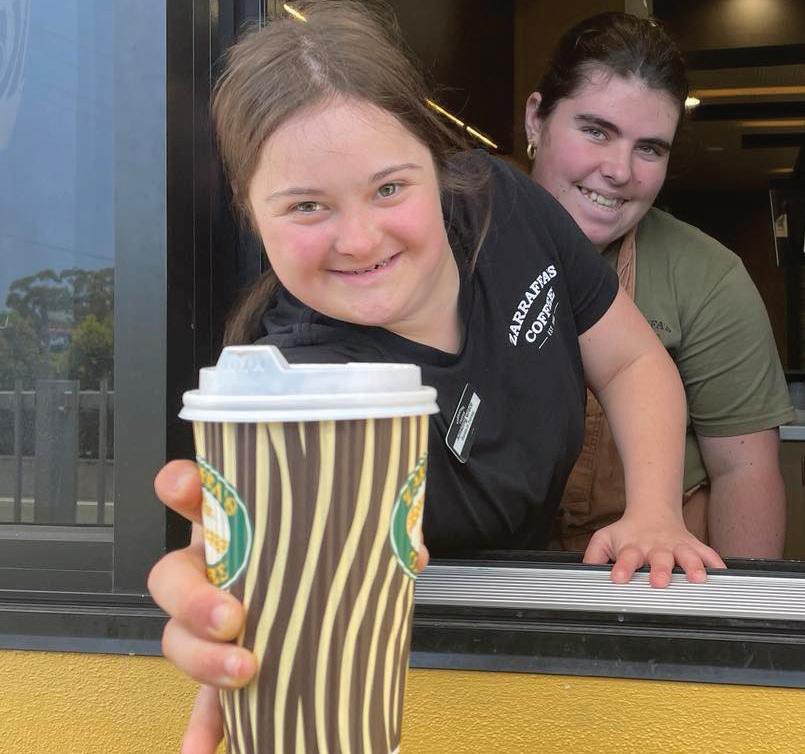
Where do you work and what is your role there?
I work at Zarraffa’s Coffee and Sunny Skye’s Aquatic centre.
My role is different at both places but have some things in common.
At Zarraffa’s I work 11.00 am-3.00pm. I have a list that I go through every shift. I make cold drinks like smoothies and fusions, iced teas and give it to customers; clean the benches; stacking the cups for hot drinks; make food and do the bin run.
My job at Sunny Skye’s I work 9.0011.30. I swim in the pool with the kids as an assistant instructor, sit at reception giving stamps to kids that have finished, clean the centre including bathrooms and pool areas and the kid’s play section.
Two jobs is awesome! What was involved in applying for, and getting a job?
I got my jobs through the Specialcise SLES program. I started by making food at Zarraffas and then as I got more comfortable and confident, they taught me how to be on the floor.
Were there any specific things at school that helped you to prepare for work?
School helped me for learning Maths and English.
Did you do any training or programs after school that have helped you?
After I left school, the Specialcise SLES program taught me a lot that helped with me getting a job. It taught me about things like job interviews, workplace rules, and positions in a workplace. I also did the Latch on Down Syndrome Qld program which was helpful too.
Do you have any extra support or help at work?
I started off with having a support worker with me at every Zarraffa’s shift. Now I go by myself. At Sunny Skye’s I still have a support worker that’s there, but I work independently. They let me complete tasks by myself and are there to help if I need anything or have questions.
Do you have any advice for other young people with disability at work?
Work hard, stay focused on your work, be willing to learn and try new things, talk to your bosses if you have questions or if you’re not sure about something. Have fun!

Confidence, engagement, learning – let your Smirthwaite chair look after the rest!
Classroom or home, better posture while seated creates a more positive experience for your child, helping them to achieve their goals and more...
• Simple, modern designs which blend into the home
• Wide range of accessories to tailor your child’s chair to them
• Four colours to choose from
• Easily manoeuvre from room-to-room
• Great adjustability for growing kids
Never miss out on family mealtimes and classroom activities with the Zoomi+


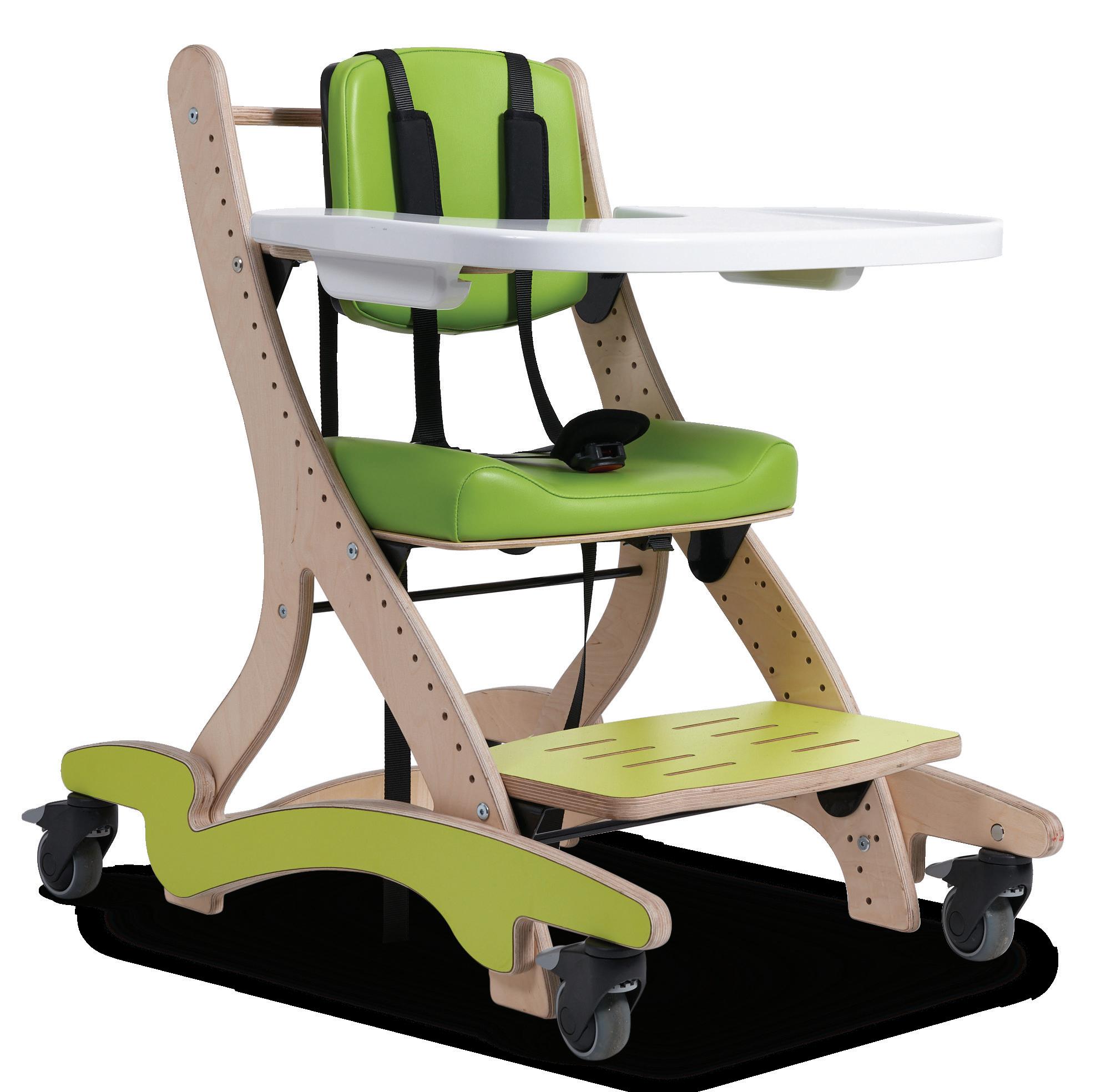
• Contoured seating gives stability for sitting, promoting engagement and focus on the task at hand.
• Low seat to floor height means feet can be on the floor, increasing support so your child can concentrate on their play and learning.
High Back Support Foot Support Quick Release Tray Mobile Skis Contoured Padded SeatYoung people with disability have the right to work in real jobs for real wages.
Getting a job is about more than earning money. Young people with disability often gain confidence and independence social connections and choices available to other people in Australia.
Families have an important role to play in supporting your child to develop a clear and optimistic vision for their future. Research shows that family participation in career planning increases the likelihood of getting a good job. The key is to focus on your child’s strengths and aspirations, make a plan and work with your allies to make it happen.
What happens in school is key to the long-term work and social participation of people with disability.
Starting early gives you time to assist your child in discovering their interests, and developing the skills that can prepare them for work. Keep an open mind when exploring things they would like to try



who have meaningful work experiences in line with their aspirations, talents and abilities can dramatically increase their chances of employment after school.
and discussing what they might want from their future, before working out how they might get there!
You can find this out by exploring questions like:
• What environment do they thrive in?
• What are they passionate about?
• What can they contribute?
• What are their talents?
• How are they supported to be their best?
Having the belief that your child can and will work when they leave school makes a huge difference. When you communicate these expectations from an early age, your child will follow your lead. Surrounding your child with positive influences who assume their employability will reinforce these expectations.
Use your informal networks, whether it’s close friends and family, or acquaintances like local shops or community organisations to find supporters and opportunities for work experience and after school jobs.
It’s normal to want to protect your child. Don’t let that make you say no to every idea or possibility. There is dignity in taking a risk. What if it does work out?
There’s a happy medium between your ‘comfort zone’ and your ‘danger zone’. It’s the learning zone, and it’s where change happens.
Having the belief that your child can and will work when they leave school makes a huge difference.
We all have blind spots in the world of work. Do you know what your friends actually do with their day when they go to the office or depot?
As early as primary school, you can point out what jobs you see people doing in your surroundings. Ask your child what they’d like or dislike about doing that job.
When they are in secondary school, having work experience and after school jobs are key to improving their expectation of themselves, and their ability to get work in the future.
Research has shown that young people
Giving your child responsibilities that teach and build skills can also translate into workplace skills in the future. Chores around the home and extracurricular activities give them responsibilities and allows them to practice work skills.
This will also give your child a better understanding of their disability and help them describe what adaptations they might need in future.
Make sure your support network understands your child’s aspirations and strengths and shares your expectations of their employability.
Often young people with disability fall into the ‘Work Readiness Trap’ where they get stuck ‘preparing’ for an opportunity
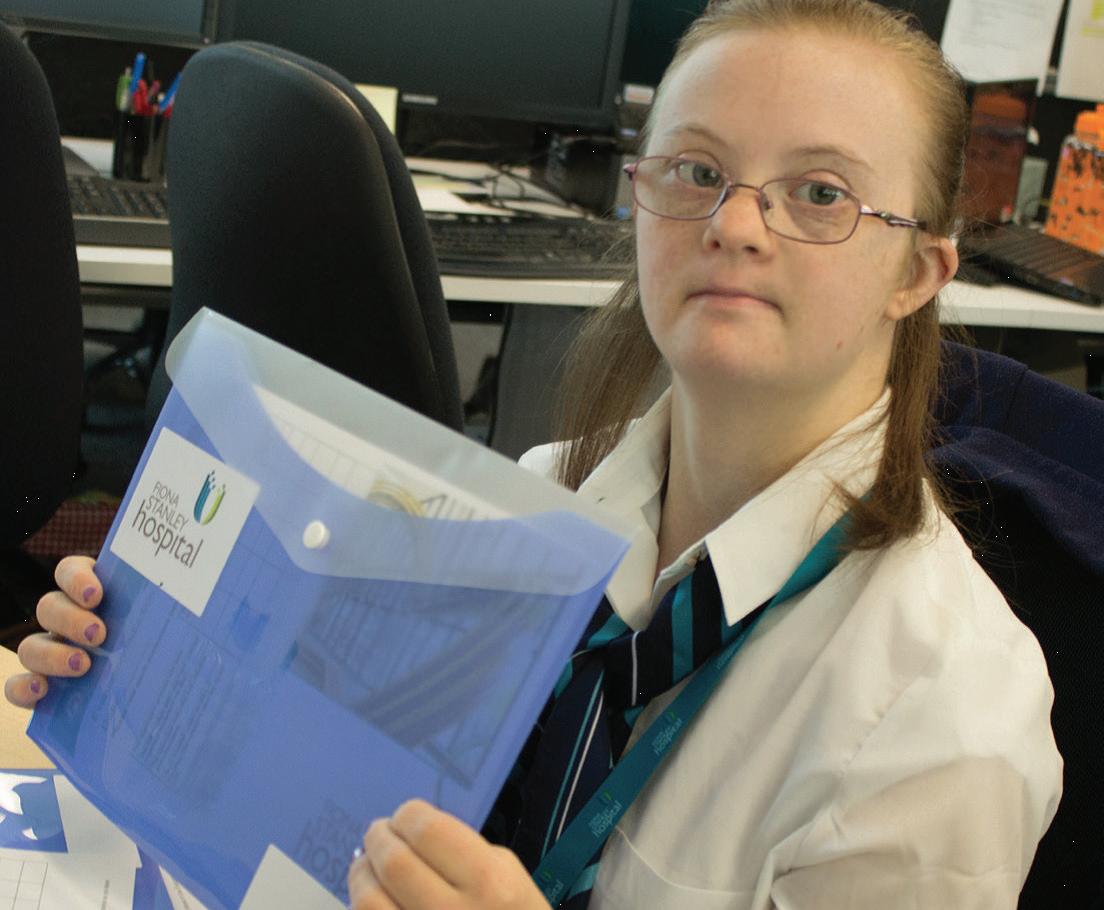
or building employment readiness skills in a market that disadvantages them. In this situation, there’s a heightened focus on a young person's barriers, often accompanied by a belief that they are not truly capable of working because of their disability.
Rather than getting them ready for work, this can result in pushing the young person into non-mainstream activities, placeholder qualifications, volunteer work unrelated to their goals, or stuck preparing for the traditional labour market where they’re expected to appear non-disabled. We don’t need to fix our children, we need to fix the workplace.
Every job description was designed at some point – so why not create a job that your child can do?
Role customisation is a person-centred approach to employment, where a job is tailored to the strengths of a person with disability, while still meeting the needs of the business.
Instead of focusing on minimising a young person’s disability in the traditional labour market, we can focus on creating customised opportunities, related to their capabilities and interests.
Take Sarah, for example. After she completed work experience placements in retail and social services, Sarah realised that she wanted a job where she could help people. Now Sarah works four days a week at her local hospital in a role that was specifically designed to maximise her skills

and abilities. Her job involves a range of tasks including assembling induction packages and greeting new staff. In doing so, Sarah has helped reduce the workload of the entire HR department and her colleagues are able to focus their attention on their areas of specialisation. “I love my job, I love that I can help everyone and that I am part of the team” said Sarah.
Schools can implement evidence-based practices that improve the chances of young people with disability.
Our Inclusive Career Development benchmarking tool is informed by research and designed to support mainstream and specialist schools to enhance their career development practices for young people with disabilities.
You can find the tool and other resources for schools on our website tickettowork.org.au/resources/schools
We get the best results when we work together. Schools, employers, employment service providers, supportive families, and your local community.
We are working to create lasting, systemic change so young people with disability can successfully transition from education into secure, meaningful employment.
To do this, the culture of low expectations must be addressed, evidencebased practices must be implemented and system-level issues that result in young people with disability falling through the cracks must be fixed.
The National Collaboration on Employment and Disability (NCED) is evolving the work of ‘Ticket to Work’ to play a national leadership role that supports collaboration and capability building across disability and mainstream education, training, and employment services so that young people with disability can successfully transition from education into decent, secure, and meaningful work.
Our pilot project, Inclusive Pathways to Employment, is finding ways to do this in mainstream employment services at four locations across metro and regional Australia.
The NCED is enabled by social justice organisation The Brotherhood of St. Laurence, and funded by The Paul Ramsey Foundation and The Ian Potter Foundation.
Find interactive resources at www.tickettowork.org.au
 Sarah has helped reduce the workload of the entire HR department and her colleagues are able to focus their attention on their areas of specialisation.
Sarah has helped reduce the workload of the entire HR department and her colleagues are able to focus their attention on their areas of specialisation.
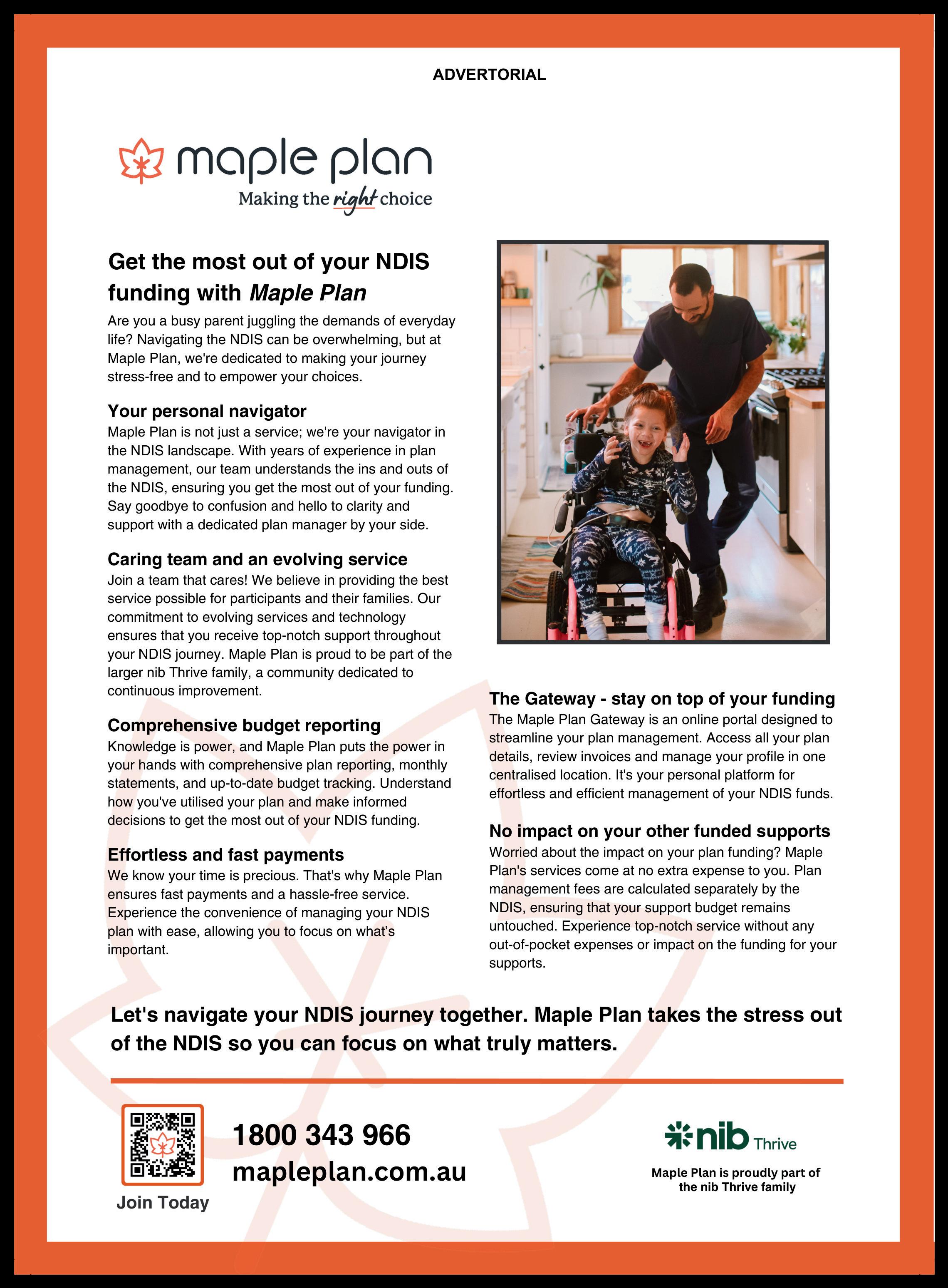

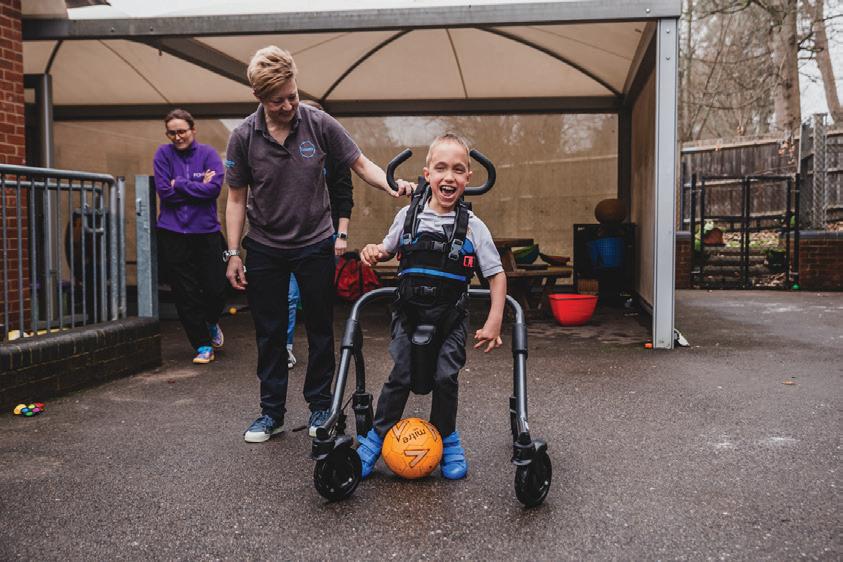

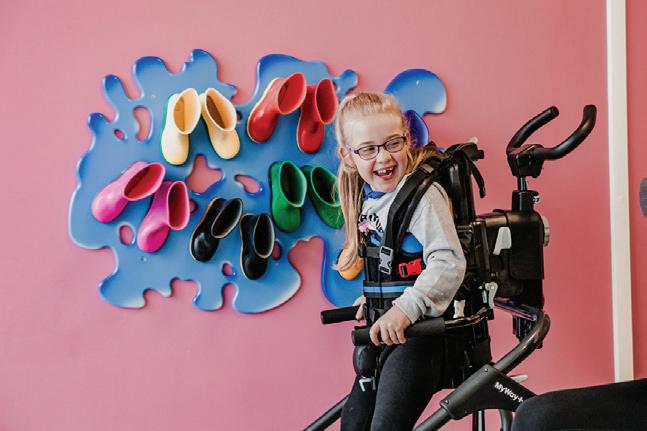



Whether the goal for your child is open or supported employment there is a framework of supports that you can access through their NDIS plan.
The following information is provided by Everyone Can Work – a website for people with intellectual disability, their families and supporters that brings together information about Australian Government employment supports, the lived experience of families and people with intellectual disability, and current research about employment for people with intellectual disability in Australia.
NDIS participants who are 15 years and over can apply for employment support to be added to their plan. This means students with disability can get NDIS employment support when they are in Year 10. This doesn’t replace transition planning and the transition activities that schools provide, like work experience in Year 10 and support from a career’s counsellor. By working together with your school, you can use NDIS supports to add to what they offer.
When students are in Year 12, the

NDIS can also provide School Leavers Employment Supports (SLES). SLES funding helps young people develop skills and experiences and connects them with supports to help them get a job. SLES is a lump sum of funding. You can use it flexibly as and when you need it.
Timing is important so that they have the funds in their plan when they need them.
You ask for employment support funding in your NDIS plan the same way you ask for other kinds of NDIS support. This means organising and preparing for an NDIS planning meeting so your young person
can add their employment goals. Timing is important so that the funds are available when they are needed. If it is a long time until your next meeting, ask your Local Area Coordinator (LAC) or Planner to apply for an unscheduled plan review. You may need to provide evidence that your circumstances have changed.
Your young person will need goals that relate to employment so that the right supports can be included in their NDIS plan. A long-term goal could be to have a job in open employment. A short-term goal would be about the next steps they need to take towards getting a job.
This will change over time. Keep it fairly broad so that it’s relevant until the next year’s plan.

Two of the main ways funding is provided for employment within the NDIS is under the ‘Finding and Keeping a Job’ Capacity Building category and School Leaver Employment Supports. While the funding can be used for similar things, “Finding and Keeping a Job” is more broadly focused on helping individuals with disabilities secure and maintain employment once they have left school.
“School Leaver Employment Supports” (SLES) concentrates on supporting the transition from school to either employment or further education, recognising the unique challenges faced during this critical period of transition. The funding for School Leaver Employment Supports is generally provided for a duration of up to two years for senior school students and recent school leavers. This support is often available for individuals up to the age of 22, but the age limit can vary.
To help you think about some goals your young person may want to include in their plan to request these supports, here are some creative ways that funding could be used:
It’s important to think about what your young person wants and write down goals to take to the planning meeting. If you use a planning workbook, take this to the meeting too. Also bring along other information like school reports.
The good thing about using the NDIS for employment, is that the supports in your young person’s plan are designed specifically for them. With your support, your young person decides what their employment goals are and how they use the supports in their plan. This includes choosing who provides their supports and what they help them with.
You can find out more about getting ready for work in the ‘Let’s talk about work’ booklet on the NDIS website.
These programs and workshops aim to enhance the overall employability of individuals with disabilities, preparing them to navigate the job market successfully and contribute meaningfully to the workforce. The content is often tailored to address the specific challenges and opportunities that individuals with disabilities may encounter in their pursuit of meaningful and sustainable employment.
The content of these sessions may include: job search skills, interview preparation, time management, understanding workplace culture, teamwork and collaboration, professional communication, self-advocacy and more.
You could also use the above skills as the basis of goals for one-on-one OT or psychology sessions if there is a specific area of development or support that your young person needs to focus on.
Think about accessing courses or programs designed to educate individuals on the art and science of creating effective resumes helping them to present their skills and experiences in a compelling manner.
Allocate funds for a dedicated job coach or mentor who can provide ongoing support, guidance, and advocacy for the individual in the workplace. This could include regular check-ins, assistance in navigating workplace dynamics, and helping to set and achieve career goals. You could strike gold and find a support worker who could help you in this area!
Think about skills that may need developing that align with the specific requirements of a chosen career path. This might include technical skills, soft skills, or industry-specific training to ensure a well-rounded skill set. While the NDIS does not fund further education or vocational training courses such as TAFE, there may be skills and development areas that are appropriate to be addressed with allied health specialists such as speechies, OTs, and other disability specific service providers.
Support the exploration and development of entrepreneurial ventures by requesting funds to help you with aspects like understanding legal issues, developing a business plan, learning the steps to make your product or deliver a service, learning behaviours that are critical to your business, organising the systems you need (eg money management, stock management).
Request adaptive technology and tools that cater to your person’s specific needs. This may involve acquiring assistive devices, software, or ergonomic solutions to enhance accessibility and productivity in the workplace.
For more information and resources on employment pathways people with intellectual disability visit: everyonecanwork.org.au



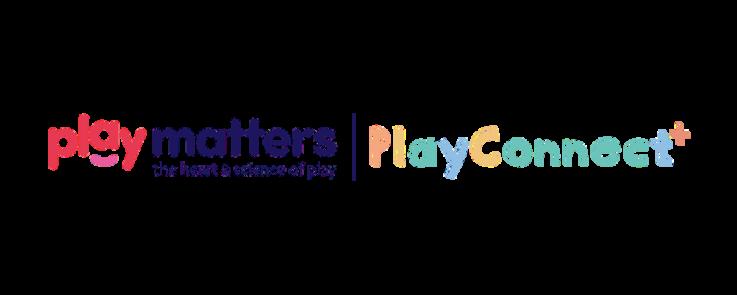

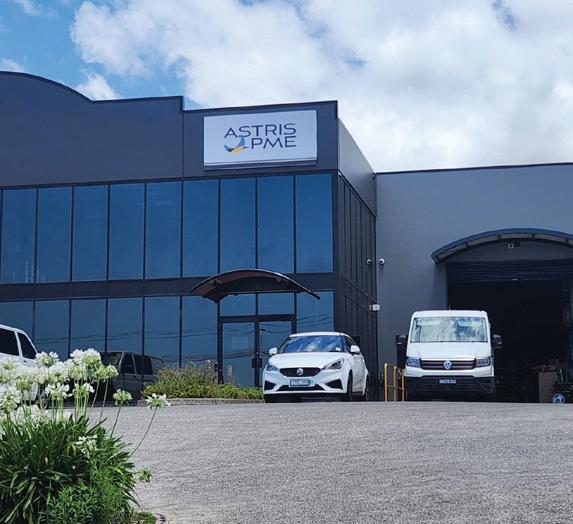
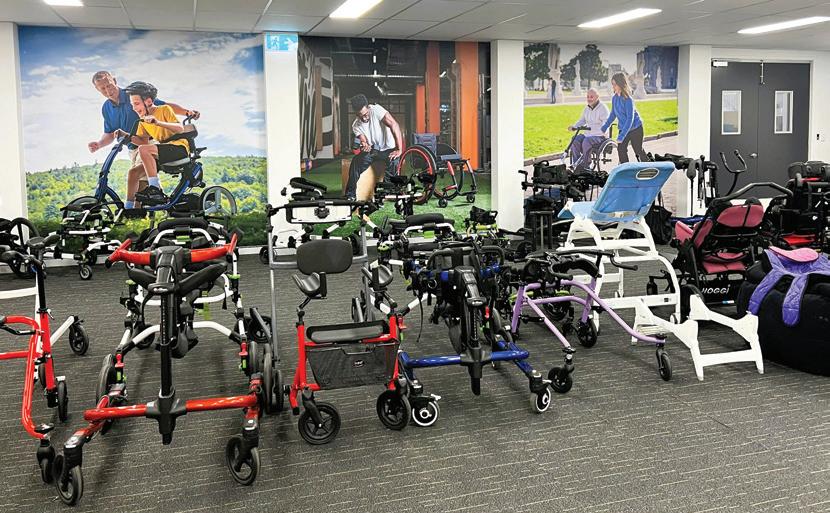


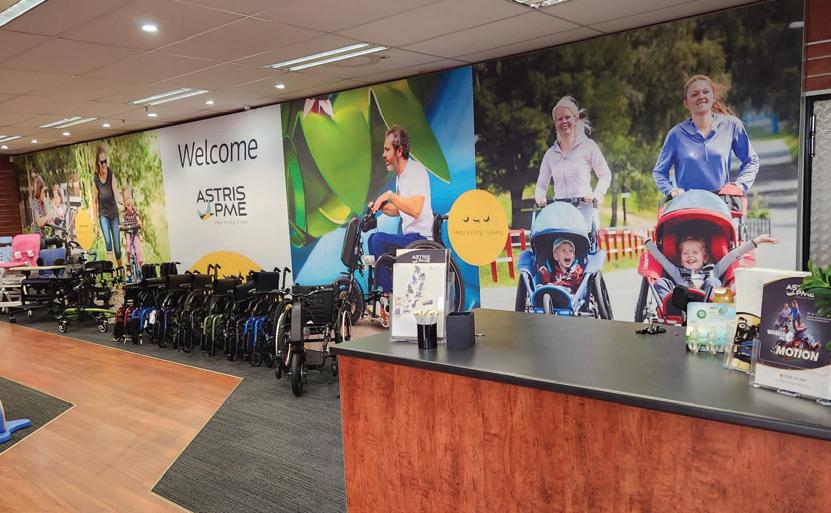





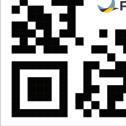






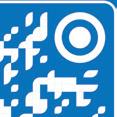
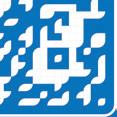
The new Starfish Pro has been re-engineered to improve all-round function, providing the best support and position for the user, and convenience for carers. The open design of this combined shower and toilet chair enables easier cleaning, with numerous adjusted configurations to accommodate the most challenging postures.
Easter is whole lot of fun, but sometimes regular egg hunts and egg decorating crafts can be a challenge for kids with disability. For example, children using wheelchairs & walkers may find it difficult to navigate grassy parks and yards, some traditional Easter activities may be overwhelming for those with sensory challenges, and children with fine motor delays may find group decorating crafts a bit tricky to keep up with.
IN A FEW TWITCHES OF AN EASTER BUNNY’S HOWEVER, ACTIVITIES CAN BE MODIFIED SO THAT THEY CAN BE ENJOYED BY EVERYONE WHATEVER THEIR ABILITY.
HERE ARE SOME IDEAS TO TRY…

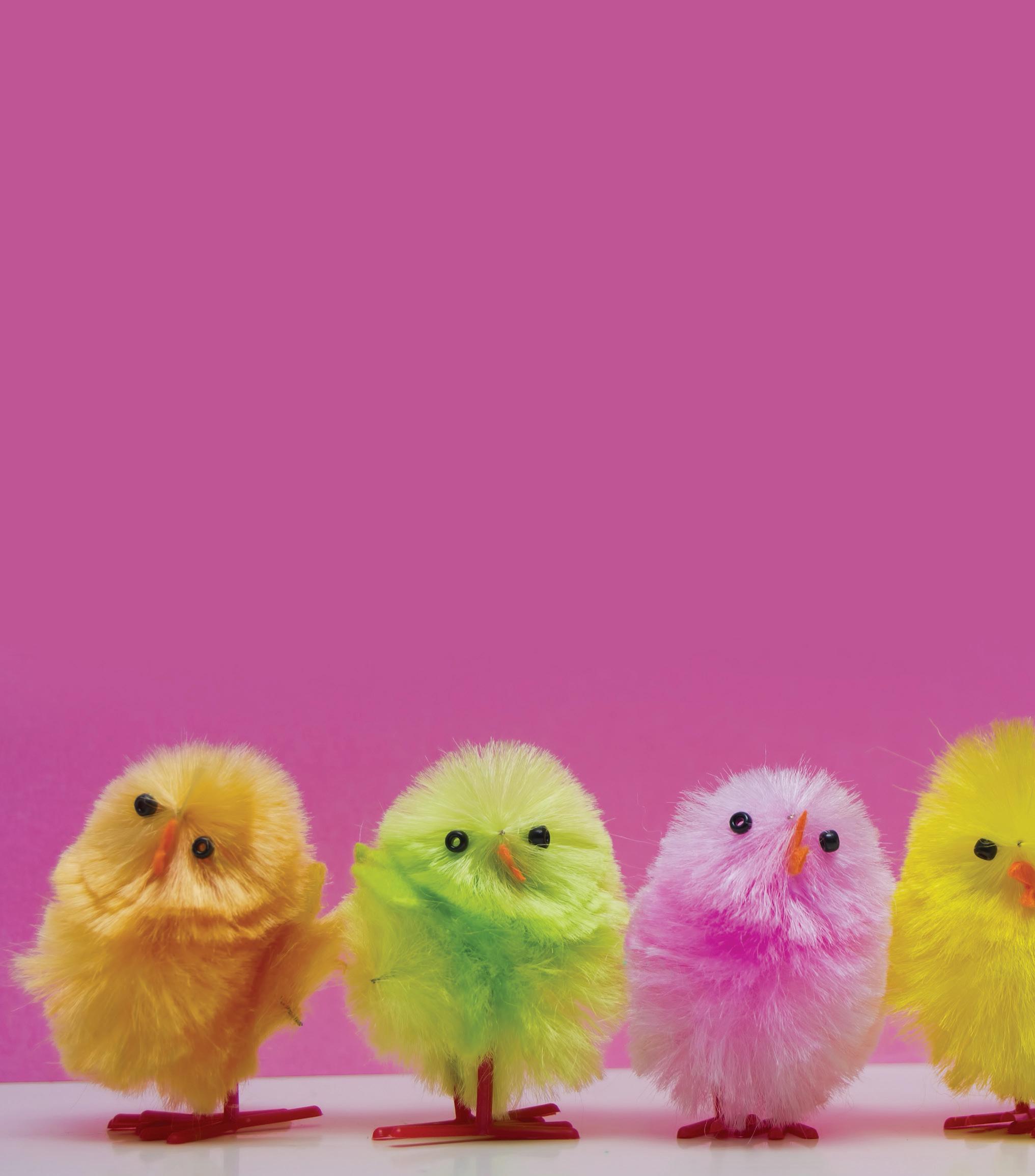
There are some simple ways that you can make an egg hunt more accessible for children in wheelchairs or with limited mobility: For children in wheelchairs, you can put eggs, mini eggs and little pressies in an Easter basket full of coloured rice and fake grass (green strips of paper) that is at table level or place eggs at accessible heights, i.e. on a fence or a tree, place them in planters etc. so that a child doesn’t have to lower themselves to the ground. Another idea to try is to attach a balloon filled with helium to eggs dotted around a yard so that they are easier to pick up.
If your child uses a wheelchair or walker, work out a way to attach an Easter basket or bucket to their assistive device so that they don’t have to worry about carrying items as well as manoeuvring around.
Painting eggs can be a bit too fiddly for kids with fine motor limitations. Alternatives include: using a crayon on a warm egg to make melted colour designs, or try sponge painting or get creative with stickers and glitter. Think outside the box with other elements that can be used for decoration taking into account different sensory preferences.
Organise an adaptive egg-and-spoon race by using larger, lightweight plastic eggs and larger spoons to make it easier for children with motor challenges. Alternatively, consider using assistive devices like adaptive grips to assist those with limited dexterity.

Easter parades can be a cacophony of unusual sights, sounds & sensations. Make use of noise cancelling headphones, social stories ahead of the event, find a quiet place to watch from if necessary and take frequent breaks. Remember – Easter bonnets are not compulsory if you have a sensory kid!
Consider dietary restrictions when assembling Easter baskets, including sugar-free, gluten-free, or nut-free treats. It’s a great idea to include non-food items in baskets or inside plastic eggs for children with specific dietary needs, such as sensory-friendly toys, stickers or small games.

Some other activities that you could plan for everyone aside from the traditional hunt include:
Music & movement sessions with sensory friendly props.
A collaborative mural: where children can contribute to a large piece of artwork. Use adaptive tools, such as extendedreach painting tools or adaptive brushes for children with limited mobility. Hold interactive storytelling sessions tailored to different abilities. Use visual aids, tactile props, or adaptive communication tools to engage children whatever their ability.

Are you concerned about your child’s development, or are you raising a child with a disability?

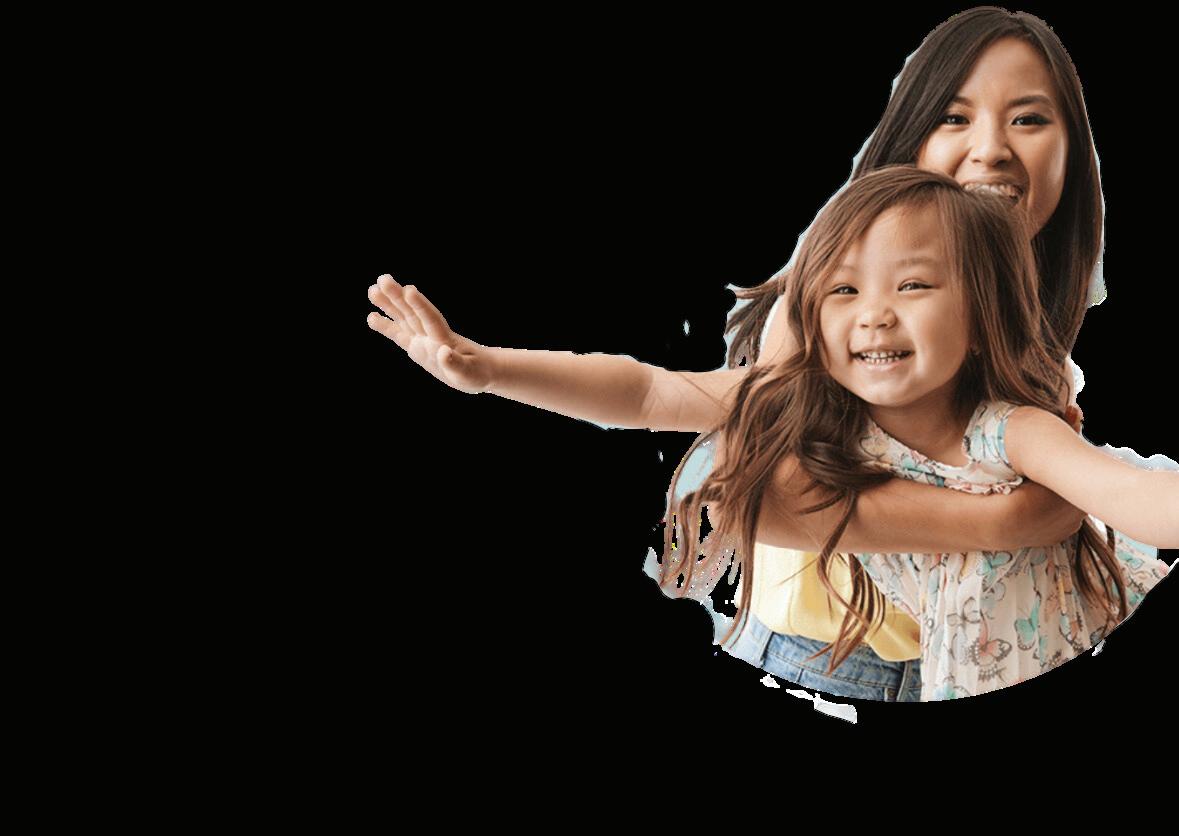
Workshop 1
Workshop 2
Workshop 3
Workshop 5
Envisage



We provide tailored support coordination, comprehensive education, and a supportive community for families with children living with a disability.
Alee Disability was founded by Hayley Thiele who brings a deep understanding and lived experience to supporting parents of children with disability. Hayley's youngest daughter Pippa was born with Weidemann-Steiner's Syndrome. She spent the first few years of Pippa's life trying to make sense of the NDIS world and having virtual doors slammed in her face. Hayley has since made it her mission to put the power back in parents hands and since the beginning of Alee in 2022, it has grown to support over 140 families.

Head to our website and see how Alee Disability can help you to unlock the potential of your child's NDIS plan ALEEDISABILITY.COM
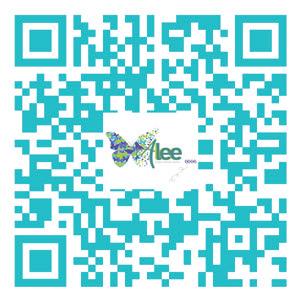




A first job is both a huge milestone and an enormous learning curve.
As well as being a big step forward in achieving independence, a supportive and engaging job allows an individual to develop their resilience, social skills and overall confidence, while hopefully doing something they love!
Autistic employees bring endless benefits to a wide range of jobs and will thrive in the right role alongside the right support. Here’s how you can empower your child or young adult to prepare for work and find a first job that is both meaningful and enjoyable.
Everyone has strengths they can bring to a job, even their first one! This includes the skills that might not initially seem relevant to building a career – in fact, these are often the skills that help us stand out. For example, a young person who excels at video games might be an excellent problem solver, while someone who can draw for
hours might have incredible focus and attention to detail.
Encouraging your child to make a list of their strengths and skills can help them identify the kinds of jobs they are capable of and interested in. This could be anything from strong computer skills to an excellent long-term memory. It’s also a great reminder of the many assets they can bring to the workplace throughout the job-hunting process.
On the flip side, it can also be helpful for your child to consider what doesn’t align with their needs and interests. For example, a job that involves lots of small talk and in-person interaction might be incredibly draining and overwhelming.


There are a range of employment pathways available to people with autism, catering to a variety of interests and support needs. Many autistic people will want to transition to the workforce straight after high school or pick up a part-time job while they’re studying. Some autistic people might want to complete further education at university or TAFE before finding a job. And others might find that Supported Employment is the best fit, as they can participate in a structured employment program designed to support individuals with moderate to high support needs.
Here are some examples of reasonable workplace adjustments:
Wearing sunglasses, noise-cancelling headphones or a different uniform to prevent sensory overload or discomfort.
Having daily tasks and instructions written down or broken into smaller tasks.
Having a designated quiet space and sensory/fidget items for emotional regulation. Receiving more frequent feedback or support from a buddy or manager. Working flexible hours.


Aside from the kind of job your child wants, there are also some logistical things that are helpful to consider. Would working early mornings or late nights be challenging? Is there a safe and reliable way for your child to travel to and from work, perhaps with a support worker? Would they be better in a full-time, parttime or casual role? Asking these questions early will help narrow down their search.
Many autistic people are able to work in mainstream settings and can benefit immensely from some simple and inexpensive adjustments to their schedule, environment and / or responsibilities. Reasonable adjustments are defined as accommodations that aren’t unreasonably difficult or incredibly expensive to implement, and employers are legally obliged to consider if reasonable adjustments would help an employee perform their job or perform it better. These accommodations will look different for every autistic individual and may only be required on some days and in some circumstances.
There are a range of organisations and funding schemes designed to support people with disability to look for and maintain work. If your child is a NDIS participant, they may be eligible for the School Leavers Employment Scheme (SLES), which supports young people with the capacity to work in mainstream settings to find and transition to work in their final year of school. The NDIS can also support participants with accessing Supported Employment, or you can search the ‘BuyAbility’ website to find social enterprises in your area.
Engaging with a Disability Employment Service (DES) might also be beneficial. These services are designed for people with disabilities who are not currently employed to find and keep work, whether

that’s a part-time job while they’re at school or a permanent role. These services are also available both inside and outside of the NDIS.
A DES provider will support people with disability as they look for work and should continue to liaise between an individual and their employer in the weeks and months after they find a job to ensure it is the right fit. Examples of assistance a DES provider will offer during this process include resume writing, job interview practice, securing work experience and helping individuals communicate with prospective employers.
The Disability Discrimination Act 1992 states that people with disability have the right to the same employment opportunities as non-disabled people. If an individual can meet the ‘inherent requirements’ of a job (i.e., complete its main roles and responsibilities), then they must be given an equal opportunity to apply for or do that role. The Act also encourages employers to have their own policies and programs to address and prevent disability discrimination and harassment.
If you or your child believes they are experiencing discrimination at work or when applying for a job, the best first step is to try and raise the issue directly with those involved. This could be a manager, supervisor or someone from human resources (HR). Your child might benefit from the support of a family member, friend, disability advocate or colleague during this time. If this doesn’t resolve the situation, your child can make a complaint to the Australian Human Rights Commission, which is free and can be done by a solicitor, disability advocate or trade union on an individual’s behalf.
For further information and support for autistic people entering the workplace, visit autismawareness. com.au and autismwhatnext.com.au.


Paediatric Physiotherapy Centre has an established purpose built intensive therapy clinic.
intensive programs run all year We provide goal directed and evidenced based therapy over two week blocks.
Limited spots available for the next school holidays








Did you know that approximately 3% to 3.5% of Australians will be diagnosed with epilepsy at some point in their lives and over 250,000 Australians currently live with epilepsy?
Epilepsy can start at any age although it is more likely to be diagnosed in childhood or senior years.
There are many different types of epilepsies and people’s experiences differ greatly. Some types of epilepsy are agelimited and the person eventually stops having seizures. For others, epilepsy can be life-long.
Seizures are only one part of epilepsy –epilepsy affects day to day life much more than people think. Not only do people tend to have recurrent seizures but they can also have cognitive, psychological and social consequences from having epilepsy.
Because you can’t see it, people in the general community often have a poor understanding of epilepsy and there are many mistaken beliefs.
Epilepsy Action Australia recently asked the epilepsy community: “What do you wish people knew about epilepsy” and had many responses.
The following are just a few of the common themes of these responses. For a more detailed summary – you can visit the original article here - epilepsy.org. au/about-epilepsy/what-do-you-wishpeople-knew-about-epilepsy
Not all seizures and no two people with epilepsy are the same – there is no one-size-fits-all treatment.
It’s complicated. Not all seizures are tonic-clonic seizures, which is what is mostly portrayed in the media. Seizures can look very different, including staring off into the distance, fidgeting, wandering, or repeating a purposeless action. Every person with epilepsy has a unique experience with seizures.
1 3 4
2 56 SOURCEKIDS.COM.AU
“I feel like I have a stalker, it’s called Epilepsy”
Sadly about 1 in 3 people with epilepsy will not be able to get seizure control with medication.
There is no magic drug that will just stop seizures and sometimes, no medication or combination of medications work well enough to stop seizures completely. People with epilepsy often find themselves going through medication after medication without much improvement. “My medication doesn’t totally control the seizures”
If the first few anti-seizure medications don’t stop or control a person’s seizures, the chances that a different medication will be successful are greatly diminished. The terms ‘intractable, refractory or drug resistant epilepsy’ may be used to describe a person’s epilepsy when it doesn’t respond to medications after trialling 2 or 3 medications.
Seizures and/or medication cause fatigue, tiredness, and pain


There is no doubt that a seizure can leave someone feeling tired and sore. It doesn’t necessarily have to be a long or severe seizure either. Immediately after a seizure many people can have symptoms such as confusion, headaches, slurred speech, feeling sick, mood changes and tiredness. Some of these feelings and symptoms disappear after a short while, and others linger.
“Epilepsy medication makes me feel very tired”
Medications also cause unwanted effects and some commonly reported ones for anti-seizure medication include:
Drowsiness, dizziness, unsteady walking, weakness, headache, difficulty concentrating, blurred or double vision, tremor, mood change such as agitation, irritability, depression, stomach upsets, and weight gain or loss. Each medication has its individual possible side effects, and it is important to ask for the Consumer Medication Information about your medication as well as speak to your doctor or pharmacist.
“It’s not the danger of the seizure itself, it’s the injuries, migraine and up to two days in bed afterward that is the part that she struggles with.”
The single most common response was how the effects of epilepsy, seizures and medication affect memory.
Many people with epilepsy report having memory problems more often than the average person. A lot of things can affect one’s ability to remember, such as health, tiredness, depression, anxiety, how well we concentrate and how motivated we are to remember.
“… its very scary with the memory loss all the time and struggle concentrating in busy places as well…”
Seizures certainly do affect memory and there is some individual variation with this. Your memory for what happens during a seizure is usually lost. Seizures can also affect your memory for what happens when you are coming out of a seizure.
“My memory is horrible… my brain doesn’t take long to get overloaded… and people have no idea how isolated it makes you feel from the rest of the world.”

Sudden Unexpected Death in Epilepsy (SUDEP) is when a person with epilepsy dies suddenly and prematurely and no reason for death is found. SUDEP occurs in approximately 1 per 1000 people with epilepsy (1 in 4,500 children).

SUDEP deaths are often unwitnessed with many of the deaths occurring during sleep. The cause is not yet known. However, having tonic clonic seizures that aren’t controlled can put you at higher risk of injury and death.
Just like asthma and diabetes, epilepsy also has an associated risk of injury or death. This is the most tragic outcome of epilepsy and many people who have lost a loved one were never aware it could happen.
In Australia, there are approximately 300 epilepsy-related deaths each year – but this figure is likely to be underestimated. Some of these deaths are due to:
• accidents
• drowning
• seizures that don’t stop – status epilepticus
• suicide
SUDEP – more than half of these deaths are thought to be due to Sudden Unexpected Death in Epilepsy.
It can be scary to think about the risk of death related to any health condition; however, by knowing the risk exists, you can take positive actions to keep yourself or your family member as safe as possible. “We lost our 19-year-old daughter last year. We were never told she could die and not once did they tell us about SUDEP. It’s devastating.”
“EVERY person with epilepsy needs to be made aware of this… his death may have been prevented if someone in the medical profession had bothered to tell us.”
There are steps you can take to reduce seizure related risks, injury or death. These include:
Get the best seizure control possible.
Take your medication as prescribed
Speak to your doctor if you are not happy with your current medication or side effects
Regular reviews with your doctor
Be involved in self-management
Avoid any known seizure triggers for you
Avoid drinking too much alcohol
Know when your seizures are most likely to occur
Get enough sleep
Be healthy
Manage stress
Make sure those close to you know what to do in case of a seizure. There are a number of devices and monitors for night-time seizure monitoring now available for use in the home. They are designed to recognise seizure-like movements or changed breathing patterns. This triggers an alarm so that help – either a family, friend or emergency services – can be notified.
The second highest response from people was in regard to employment, and this topic continues to be a problem across the board.
“Don’t treat people like they’re stupid and incapable of doing their job!”
“… you legally can’t be fired for having it…. but they can make life so uncomfortable for you that you just leave.”
Whether someone’s epilepsy affects their work depends on whether their seizures are controlled, what their seizures are like and how often these happen. It also depends on the type of work they do, and any risks that having seizures at work might bring. Anyone having seizures may not be able to do jobs that risk personal safety or the safety of other people. As with anybody, the type of work also depends on skills, qualifications and experience. It may also depend on how your epilepsy affects you.
7 8
It’s often not recognised as a disability “…there are few agencies that have any idea what it means, including Centrelink and NDIS…”
Epilepsy seems to slip through the cracks when it comes to getting additional support and services. Because it is an “invisible” condition and seizures occur sporadically, it can be difficult to find help with disability funding or unemployment funding. Some services don’t recognise or understand that having seizures can impact on all aspects of life, despite the evidence that it does.
“…my daughter can’t get disability pension or NDIS…”
“Wish the education department would recognise epilepsy as a disability, so that children/adults could obtain much needed support”.
Although there is improved understanding of epilepsy in the general community, knowledge is still lacking and seizures are often mismanaged or misunderstood in a public setting.
“I wish they knew a lot more then they think they know”
“I wish they cared more to know more about it”
“People don’t understand what it is like to not be able to drive, live on your own, and to be relying on others for simple things. Not being able to just have a bath to de-stress without someone supervising you.”


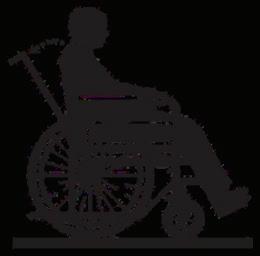


Apply the wheelchair brakes
Leave person in chair with seatbelt on

Every year Epilepsy Action Australia has more than 4000 new referrals from people affected by epilepsy who are seeking support. They know that at times epilepsy can be a frustrating and isolating condition to deal with, but you don’t have to manage it alone. Call now on 1300 37 45 37 (1300 EPILEPSY) to have a chat about your situation and what support or assistance you would like. Or visit epilepsy.org.au to access their resources and services.
Recline backrest only - do not tip wheelcha
Lean person slightly to one side to aid drain food/fluid/vomit in mouth if needed
Support head and protect airway as require
After the jerking stops carefully remove per and place in recovery position if necessary
Observe and gently reassure until recovere
ground




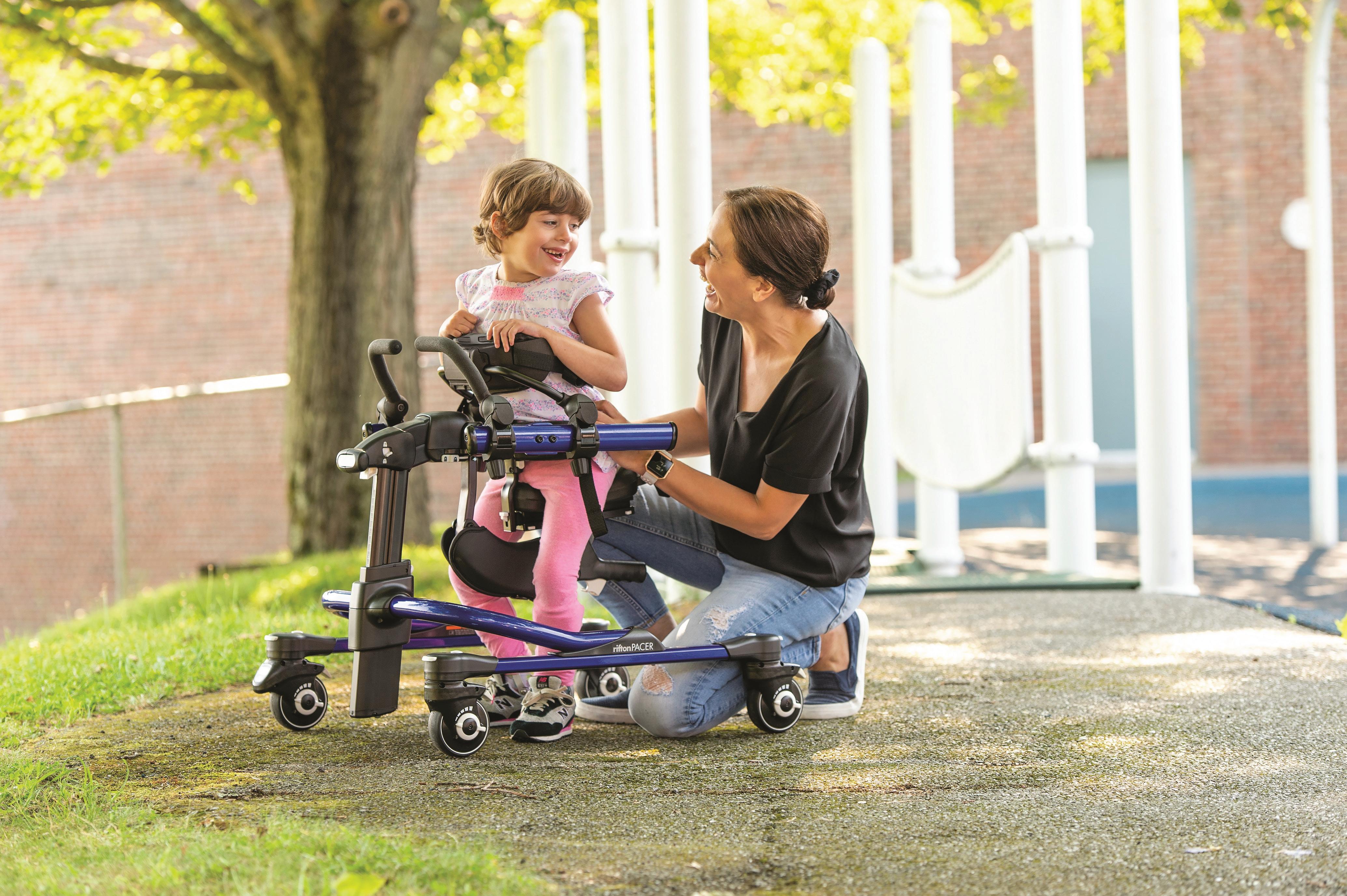
M






When Frankie entered the world, it marked the beginning of a journey Kym never anticipated—into the world of Acrodysostosis, a rare genetic condition. In our most recent Q&A session, Kym candidly shares the practical aspects of raising Frankie, one of only 130 diagnosed with the condition worldwide.
How did you first become aware that there might be a concern about Frankie’s health or development?
What were the early signs that led you to seek a diagnosis?
We didn’t seek a diagnosis, it found us!

Frankie had a low nasal bridge at birth which we originally thought was due to her forceps delivery, but a paediatrician at our 6-week review thought was just cosmetic. Then, she developed a nasal infection that just wouldn’t clear, and at 4 months we got referred to an ENT who asked about her low nasal bridge and said we should see the craniofacial team at Sydney Children’s Hospital regarding options for repair.
Frankie was 6 months old when we got our appointment. And by this stage I had noticed that her fingers and feet were a little different to other babies in our mother’s group, but I thought 'she’s a
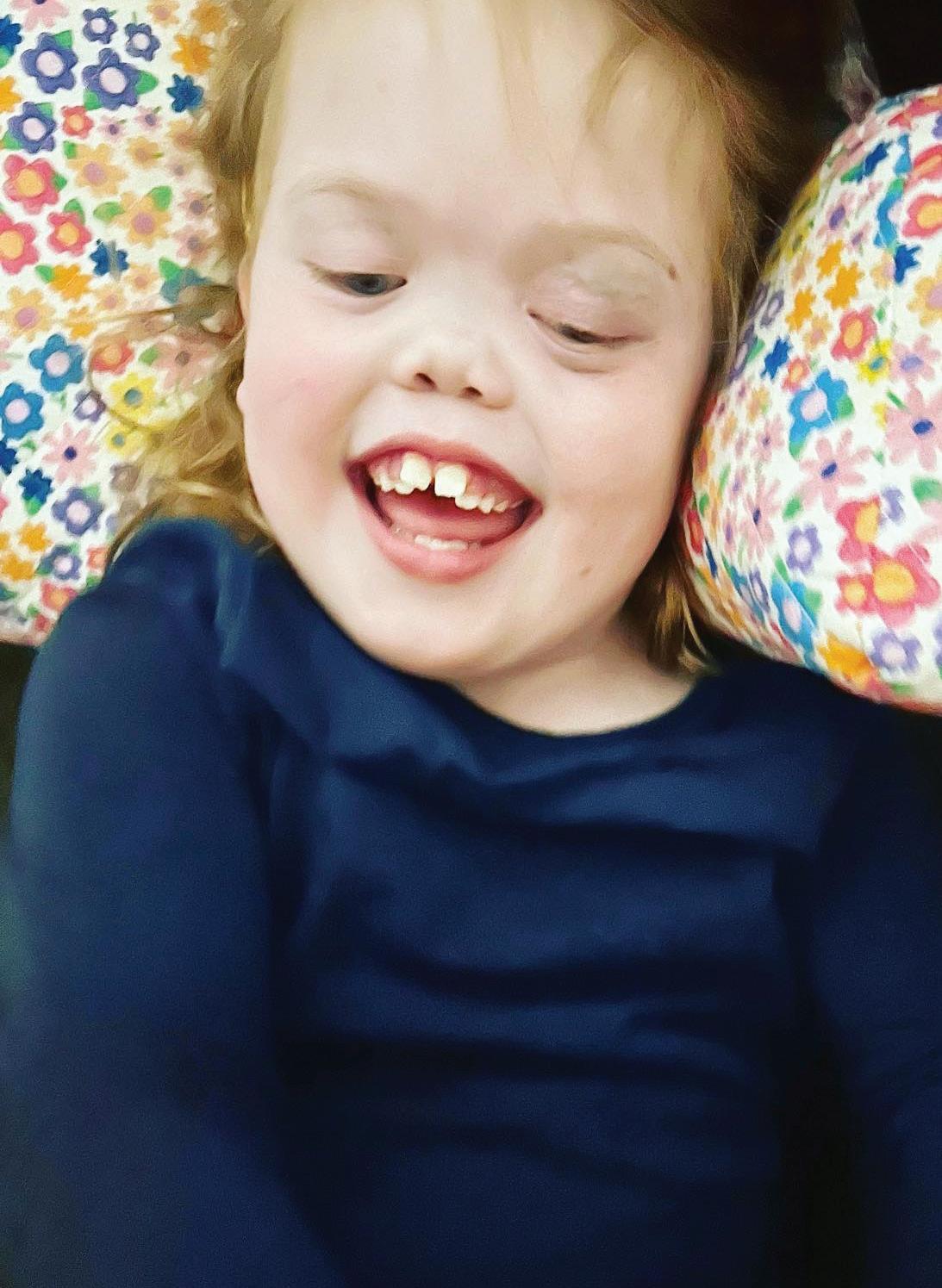
chubby baby', and talked myself out of my concerns.
Craniofacial is like speed dating several specialist doctors over the course of a few hours. We saw the neurologist first, who was concerned that Frankie had a large head, so suspected hydrocephalus and she wanted us to come back and do some test in a few months. We were worried about this, but the surgeon reassured us that it was manageable and treatable. We saw all the doctors, and last was genetics.
The genetics specialist immediately noticed the low nasal bridge, and also commented on Frankie’s hands and feet, my heart started racing and I immediately felt ill...…then he casually said that our baby likely had some kind of syndrome or disorder.
Everything he said from that point I don’t think I could hear, I just stared at Frankie playing on the floor with toys blissfully unaware of what was to come.
Can you tell me a bit about the diagnosis Frankie received?
What does it mean, and how does it affect her life?
On our return to the hospital for our follow up weeks later we were told Frankie had Acrodysostosis – a very rare genetic condition that is a form of skeletal dysplasia, possible dwarfism, hormone resistance and various developmental delays. She would be only one in 130


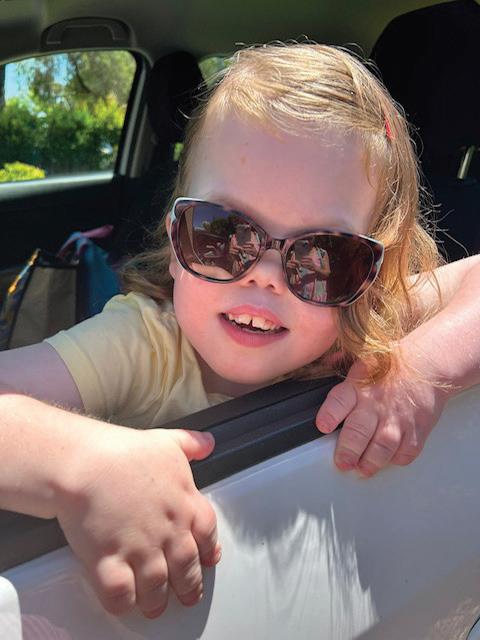
people in the world diagnosed with AcroD, and the only person that he knew of in Australia. We were given a photocopy of a fact sheet that was likely written 30 years ago and told try not to “Dr Google”.
It was heart breaking at the time as we didn’t really know how this condition would impact our child and her health and future. We also had to do a blood test to officially confirm the Acrodysostosis diagnosis and confirm if it was type 1 or type 2. Frankie has type 2.
How has the diagnosis impacted your family dynamics and daily routines? Have there been any specific challenges or adjustments you’ve had to make to support Frankie?
It was a tough time that first few months, slowly understanding what AcroD was, how it was going to impact her and finding others out in the world who had been on the journey and could help or share their knowledge. We couldn’t accept that we had to navigate this path alone. We started a Facebook page and within a few months we had created our own little community and support network that would become our tribe.
Through our AcroD community we found out that there was likely going to be additional diagnoses; global developmental delay, severe apraxia of speech, autism, ADHD, sensory processing disorder, OCD, generalised anxiety disorder and much more. We had to watch out for the

signs and signals of so much and hoped to just stay ahead of the curve. We flagged the possibilities with therapists and doctors to ensure we were treating and supporting as much as we could and as early as possible.
Frankie was diagnosed with ASD level 2/3 when she was 5, confirmed GAD when she was 6 and recently diagnosed with ADHD. Coupled with OCD, SPD and she now also has a shunt to help regulated her hydrocephalus (fluid on the brain).
What kinds of treatments, therapies, or interventions has Frankie been receiving?
Frankie has been doing speech, OT, physio, music therapy & behavioural therapy over the last seven years. In the last three years, we have focused on speech, OT and behaviour therapy and really focused on what she was learning at school and developing therapies and strategies to help her enjoy school, her learning and feeling independent at home.
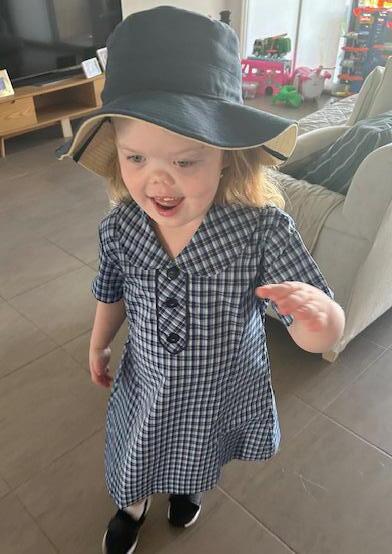
feel organised and emotional regulated. It’s been challenging and it still can be very challenging, however we are now better equipped with our own skills on how to support her and how to help her.
Frankie is reading, writing, very good at maths and really developing in being able to communicate her needs.
As a parent, what are your primary concerns and hopes for Frankie’s future in light of her diagnosis? How can those around you support you?
Like all parents, you hope your child is happy, healthy, pain free and has the opportunity for a good life.
I find that the support I need, I get from my other special mums, I have created a network of warrior mothers and surround myself with them.
Frankie loves structure and routine, and to get the best outcomes for her she needs these two really key components to reduce stress and anxiety.
By creating clear instructions via visual schedules and social stories, Frankie feels like she knows what’s going on, what is expected of her and this in turn helps her

Setting Frankie up to be the best that she can be, hopefully independent enough to care for herself, have a small job doing something that she finds interesting and is passionate about in the future, making friends and being loved, respected and accepted.
There isn’t a cure for AcroD, no silver bullet solution to her condition and what it brings. And I guess the biggest concern is who is going to care for her when I’m gone.
I find that the support I need, I get from my other special mums; I have created a network of warrior mothers and surround myself with them. It’s important for me to help others, but also seek help from them for myself.


Source Mama is a community that supports mums raising children with special needs. An authentic community that encourages, uplifts and most importantly, understands. We keep it real, allow you to vent, offer advice and pass on our tips and tricks, all while supporting and inspiring when you need it most.
Real stories from mums who understand what it means to raise kids with a disability



REGISTERED NDIS PROVIDER


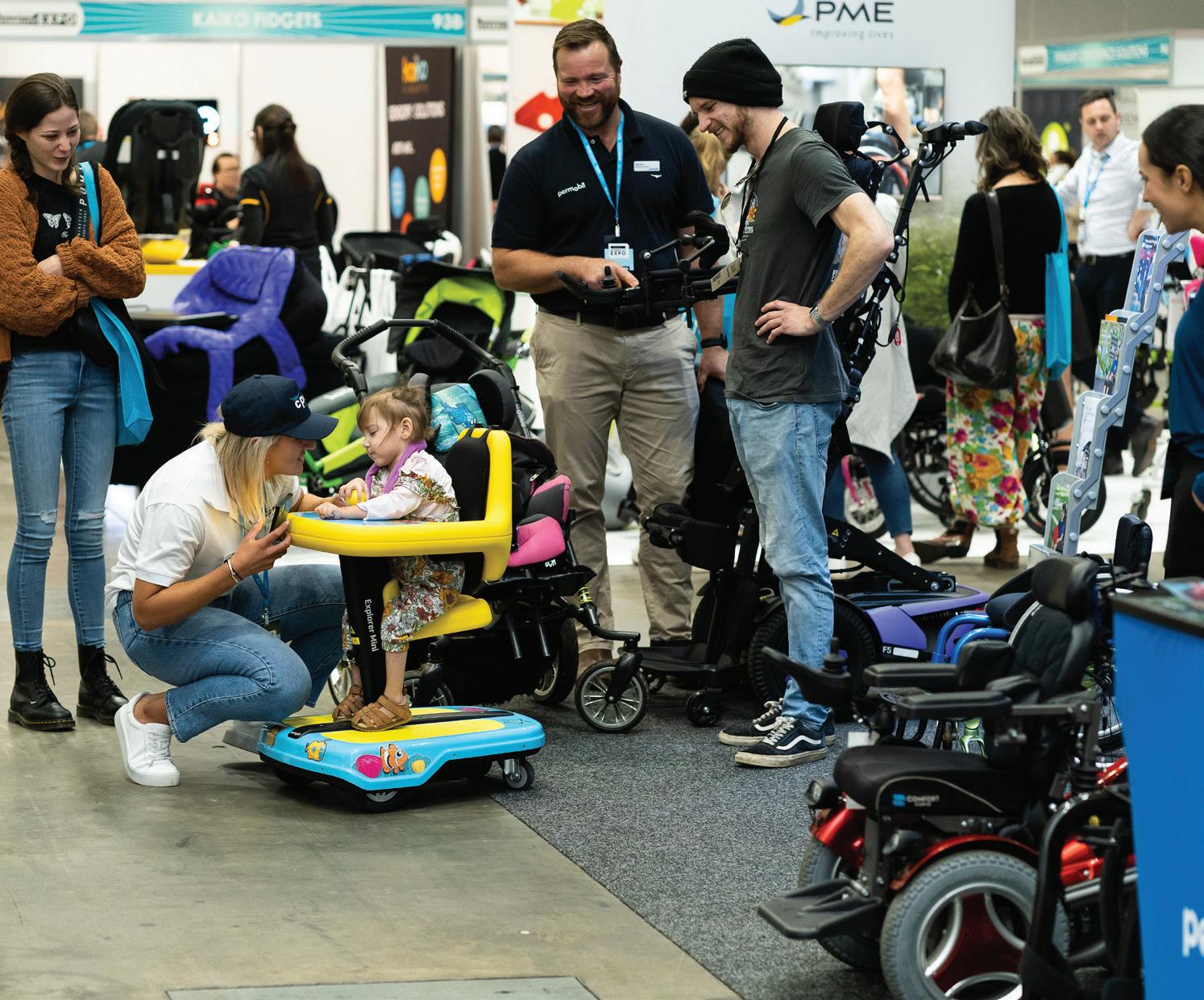


Customised and modified bikes, trikes, e-trikes and frame runners
Our expert Product Specialists empower children and teens living with disabilities to experience the thrill of cycling.
Be part of their positive changes as they improve confidence, strength & independence.
Safety, fun, and personalised support are our priorities.










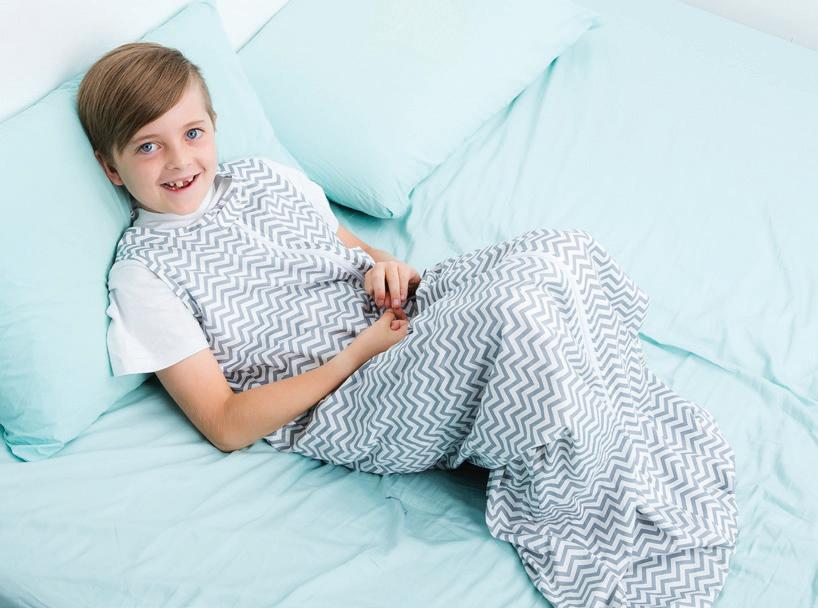






Did you know that paediatricians across Australia can now order Medicare funded genomic testing for certain conditions? This change means kids and families have a better chance at getting the answers they need, faster than ever before.

As many families with a child with a suspected rare genetic condition know too well, the search for a diagnosis can be long and frustrating. Advances in technology are providing doctors and scientists with new tools to try and search for answers. One tool shown to increase the chances of finding an answer is genomic testing.
Genomic or DNA testing allows many genes to be looked at it once. Being able to pinpoint the cause of a child’s condition via genomic testing has been shown to yield a range of potential benefits, including helping guide patient care. This evidence led to genomic testing being funded in Australia for kids under 11 who meet certain clinical criteria.
“As a paediatric doctor and as a parent, genomic testing has the ability to give us answers we really need” – Cara¹
A few things are worth emphasising at this point. One, not everyone may want to know the cause of their child’s condition – and that’s perfectly okay. Two, genomic testing is not always the right diagnostic test for your child’s specific circumstances; chat to your paediatrician to see if it might be the right fit for your child and family. Three, many kids unfortunately remain without a diagnosis after genomic testing –for various reasons.
The ability for paediatricians to order genomic testing is new. Previously families have mainly been referred to clinical genetics services, which can have a very long waiting lists. A study from the University of Melbourne and the Murdoch Children’s Research Institute is working to understand how families’ experiences of this shift in care can be enhanced. Scan the QR code below to read more about the study or contact PhD student Erin Crellin (erin.crellin@mcri.edu.au) if you are interested in getting involved.

 By Erin Crellin. PhD student, the University of Melbourne and Murdoch Children’s Research Institute erin.crellin@mcri.edu.au
By Erin Crellin. PhD student, the University of Melbourne and Murdoch Children’s Research Institute erin.crellin@mcri.edu.au

From personal stories to insightful discussions, practical tips, and expert advice, these podcasts offer a mix of perspectives on caring for children with disability. To listen, simply search for the titles on your chosen podcast platform.
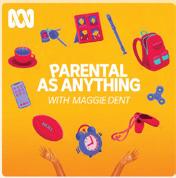
OK, this one isn’t disability focused but there’s so much good and thought-provoking advice contained in these episodes, we had to put them on our list.
Maggie Dent, one of Australia’s favourite parenting authors and educators gives you practical tips and answers to your realworld parenting dilemmas. Maggie talks to parenting experts from around the world to find practical solutions to the challenges every parent is facing today.

Ever wondered what it’s like to experience one of the oldest rainforests as a blind person? Or how it feels to get around one of the seven wonders of the world with mobility issues? This is Accessed That, a podcast that explores what it’s really like to travel as a person with a disability. Each episode, Oliver and Karni talk to travel lovers about their experience navigating the world - hearing the highs, the lows, and the low down from the people who have been there, accessed that.
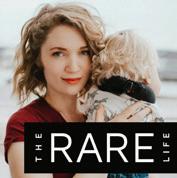

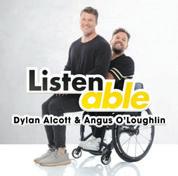
Challenge what you think it’s like to live with disability.
Hosts Dylan Alcott and Angus O’Loughlin speak to people living with disabilities about their lives and ask them the questions you thought were off-limits. You’ll laugh. You’ll cry. You’ll learn something. This is a podcast for everyone - disabled or abled, which hopes to break down stigmas, change perceptions, and to challenge what you think it’s like to live with disability. Keep your eyes (and ears, obviously!) open for the odd ListenABLE Kids episode too. More of these please, Dylan, if you’re reading!
You’ll relate to so much in these episodes… Listen to mums Mandy Hose and Kate Mulholland laugh (a lot) and cry as they chat to each other and friends about parenting multiples with disabilities and additional needs.

In this series Chloé Hayden chats to people that, just like her, are living life boldly and are unapologetically themselves. Chloe is joined by people known for living their lives authentically, and with confidence. From life lessons to advice for overcoming challenges, to learning to embrace your *sparkle*. Boldly Me will show you that the best way to live life is by fully embracing yourself.
This is the real, raw, and all the feels of loving a child with disabilities. Episodes feature parent-guests, professionals, and solo episodes with host Madeline Cheney.

A brand new podcast from Melanie Dimmitt, this series celebrates the lives of people and families who tube-feed. Listen in as author, journalist and tube-feeding mum, Mel, chats with a vibrant mix of guests about how they go about this little-known, but no less worthy way of eating.

Join two London mums, Lauren Fenton and Rina Teslica, both mothers to daughters with a disability as they and their guests share unique parenting stories and chat about the things they’ve learnt and are still learning. Prepare to sometimes laugh, sometimes cry, but hopefully leave with a shot of optimism in your arm!



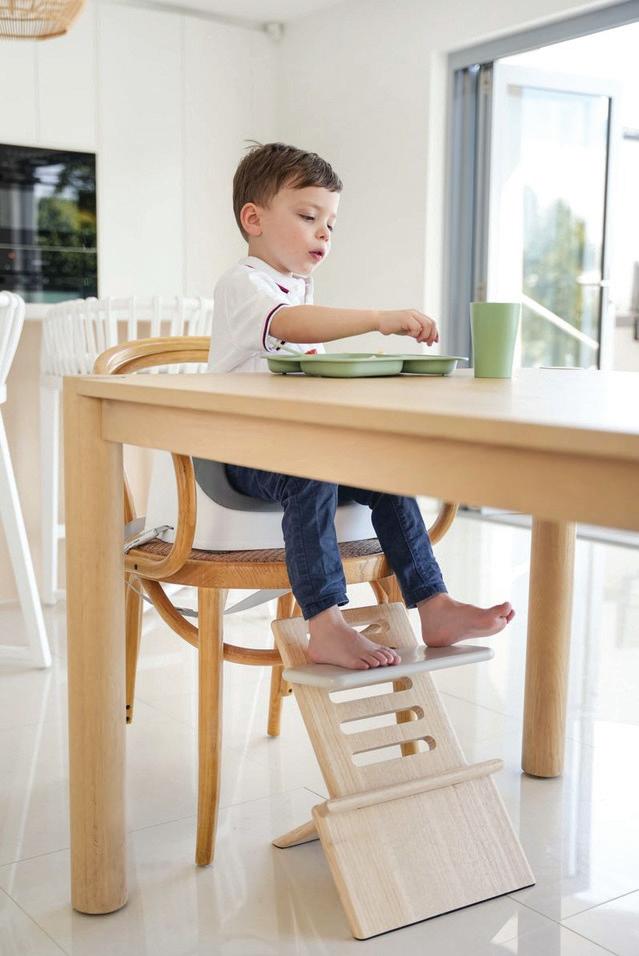





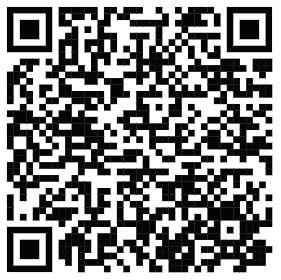


We chat with What Ability about how professional athletes are helping redefine disability support.

Thanks so much for your time! Can you tell us a little about What Ability and the inspiration behind it?
What Ability is a NDIS registered disability support service that specialises in 1:1 community access and camps. We’re a little bit different because we employ capable, fit and friendly support workers across the country, some of whom are professional and semi-professional athletes. We’re the experts in putting fun in disability support, so our days out could be bushwalking, swimming, cooking a BBQ in the park or visiting local cafes.
Our founder, Steve Dresler, is a former Parramatta and NSW Cup player and he saw the benefits first-hand of athletes as support workers, having faced early retirement through injury. What Ability is the evolution of Steve’s desire to create a positive impact amongst his peers and through this he’s built a community connecting with children and adults.
We’d love to know more about the athlete program. What organisations and athletes do you work with?
Since starting What Ability, we have supported and recruited semi-professional and professional athletes from a range of different sporting codes. Our athletes are qualified support workers, but because of their sporting profile and influence, they help us improve the public’s understanding of a support worker role as a career and break down existing social barriers around disability.
Our athletes form genuine connections with our participants. Whether it’s taking a participant on a day out or attending our What Ability Days, our athletes are very passionate about what they do.
We currently have athlete support workers in NSW, VIC, QLD and WA, some of which include Tom Trobojevic (Manly Sea Eagles), Maddy Proud (Australian Diamonds), Kyle Langford (Essendon FC), and Lauren Cheatle (Australian Cricketer).
In 2023, we joined forces with Manly

Sea Eagles, GWS GIANTS, Hoops Capital, New South Wales Rugby League, NRL, Rugby Australia and Disability Sports Australia. These community partnerships have helped us facilitate unforgettable moments for our participants and put all abilities on the big screen on a national scale.
What about the range of participants you support; what are their goals, etc?
We support participants aged 5 to 65 who have a wide range of disabilities including Autism, cerebral palsy, intellectual delay, Down syndrome and Angelman syndrome. The ultimate goal for both our families and our support workers is the happiness of our participants. If they’re having fun, we’re doing our job right. When a participant comes home from a day out and they’re happy, that is the ultimate outcome for parents.
Our participants have such a wide range of individual goals that they’re working towards. We tailor our support around a specific goal or goals and help them to achieve it. This in turn, is helping to develop that individual’s life skills.
Access to the community is always an important one – it’s an integral part of life. Being able to access the community allows relationships to form, social connections to thrive and the discovery of new hobbies and places. We build a support plan that aims to help our participants gain confidence in everyday living and in turn, develop life skills, whether that is catching the ferry, paying for their morning coffee or doing a grocery shop.
The most rewarding aspect of what we do is seeing the happiness that our support provides.
Can you share any feedback you’ve received that makes everything you do worthwhile?
The most rewarding aspect of what we do is seeing the happiness that our support provides. The genuine bond that our support workers and participants develop is incredible and provides our participants with unforgettable moments and lifelong friendships. As we continue to build an inclusive world, we will continue to put happiness first for all abilities every day.
In terms of long-term goals, what does the organisation hope to achieve in the coming years?
The ultimate vision of What Ability is to build an inclusive world. We want to continue to change the disability sector and keep recruiting athletes to help us achieve this. We see more athletes joining What Ability to break down the stigma of disabilities and help more families.
Our vision is backed and shared by the support of our major partners; AAMI,
Harvey Norman, Optus, Shaw and Partners and Tyrepower who have helped provide visibility of our company and mission. The ongoing support of these household names will allow disability to be seen and heard as we reach new families and build an inclusive world.
Are there any upcoming events or initiatives that the community can look forward to?
Yes! We are very excited to announce that we have an upcoming What Ability Day at AAMI Park in Melbourne on Sunday 17 March. We are inviting people with a disability and their families to join us for an unforgettable day. Attendees will participate in a range of fun activities, pass the ball around, and play alongside some of our local What Ability athletes. Head to our What Ability website to join the waitlist!
And finally, where does What Ability run and how can families get involved?
What Ability is currently operating in four states including New South Wales, Queensland, Western Australia and Victoria with full time and casual support workers available to support. Families, participants and support workers can get involved by contacting our team at info@whatability.com.au,
1300 358 714 or completing the quick sign up form on our website, whatability. com.au/services/need-support/
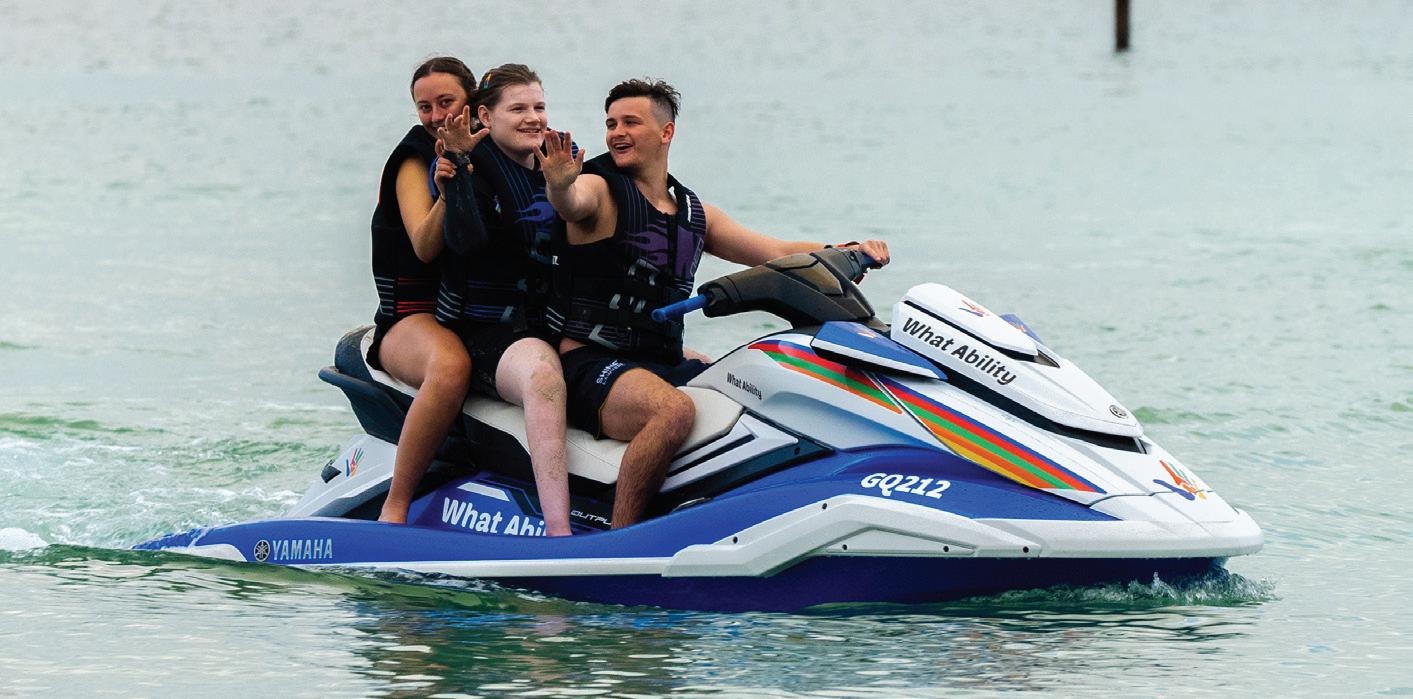

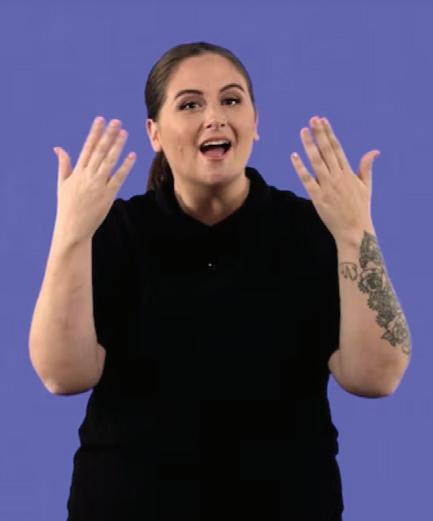
This
from the book series of the same name by AFL great, Eddie Betts follows imaginative 8-year-old boy Eddie and his best friends Lottie and Tal as they have fabulous, fantastical playground adventures full of music and games. We can’t wait to meet the character ‘Decks’ - decked out with DJ gear on her wheelchair, she brings the high energy and cool factor in the playground and is voiced by the disabled actor, Crystal Nguyen. Watch on Netflix and SBS on Demand.


This is a great collection of online videos of 10 Australian stories signed for children in Auslan. Viewers can enjoy favourites such as Too Many Cheeky Dogs, My Strange Shrinking Parents, Come over to my House, and Flipper and Finnegan. abc.net.au/education/ digibooks/abc-educationstory-time-in-auslan

All episodes of this family favourite from the ABC are great to enjoy together, but we especially love para surfing champion Sam Bloom’s reading of Matt Formston’s Surfing in the Dark. abc.net.au



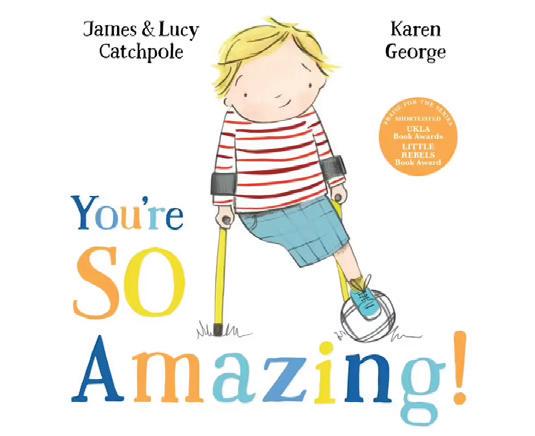
A funny, whip-smart, friendly picture book about how it feels when strangers make you feel different because of your disability.
One-legged Joe is “amazing”. He knows this because wherever he goes people always tell him he’s amazing. Amazing for sliding down the slide, for kicking a ball. even walking to get an ice cream. Of course, being Amazing Joe is better than being Poor Joe. But Joe doesn’t want to be Amazing Joe OR Poor Joe. He’s happiest when he’s just Joe.
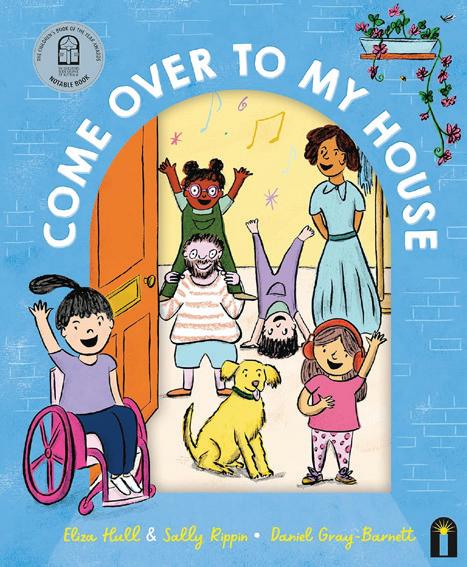
Eliza Hull & Sally Rippin
Come Over To My House is a delightful picture book that explores the home lives of children and parents who are Deaf or disabled. Cowritten by disability advocate Eliza Hull and Australian Children’s Laureate Sally Rippin, the inclusive rhyming text authentically explores the characters’ various disabilities.



Jessica thought she was prepared for the experience of motherhood. Armed with advice from friends and family, parenting books and antenatal classes, she felt ready. After giving birth, she found herself facing a different, more uncertain reality. Her son, Ben, was fighting to stay alive. Jessica shares her journey raising Ben whose disability means he will never be able to move or communicate without assistance. Jessica has to learn how to feed Ben when he can’t eat, wrestle with red tape to secure his education and defend his basic rights in the face of discrimination.
This uplifting story is about the power of family love, finding inner strength and, above all, hope.









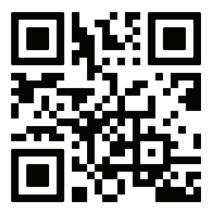
Manufacturer: Firefly
Supplier: Firefly
Weight: Up to 30kg
Height: 1-8 years
• Lightweight & portable postural support seat – with laterals and headrest that adjust as the child grows.
• Helps children to participate in many activities (by attaching to chairs etc).
• Can be used in many places – home, school, restaurants, cinema, dentist, hairdressers etc.

Manufacturer: Leckey
Supplier: Sunrise Medical
Weight: Up to 70kg | Height: N/A
• Mygo seat provides optimal postural care for children with moderate to complex support needs.
• Diverse range of accessories available to support complex posture.
• Available with a manoeuvrable Hi-Low base, Zippie IRIS or Z500 power wheelchair.
Manufacturer: Special Tomato
Supplier: RTD Australia
Weight: Up to 91kg
Height: Up to 185cm
• An adaptive seating system in 3 variations - Sitter Only; Sitter with Floor Wedge (1-3) and Sitter with Mobile Base.
• All of the sitters come with attachment straps.
• Can be securely attached to a stable dining chair, classroom chair, stroller or any of the Special Tomato Bases.
The Special Tomato Sitters are intended for children with mild to moderate positioning needs.

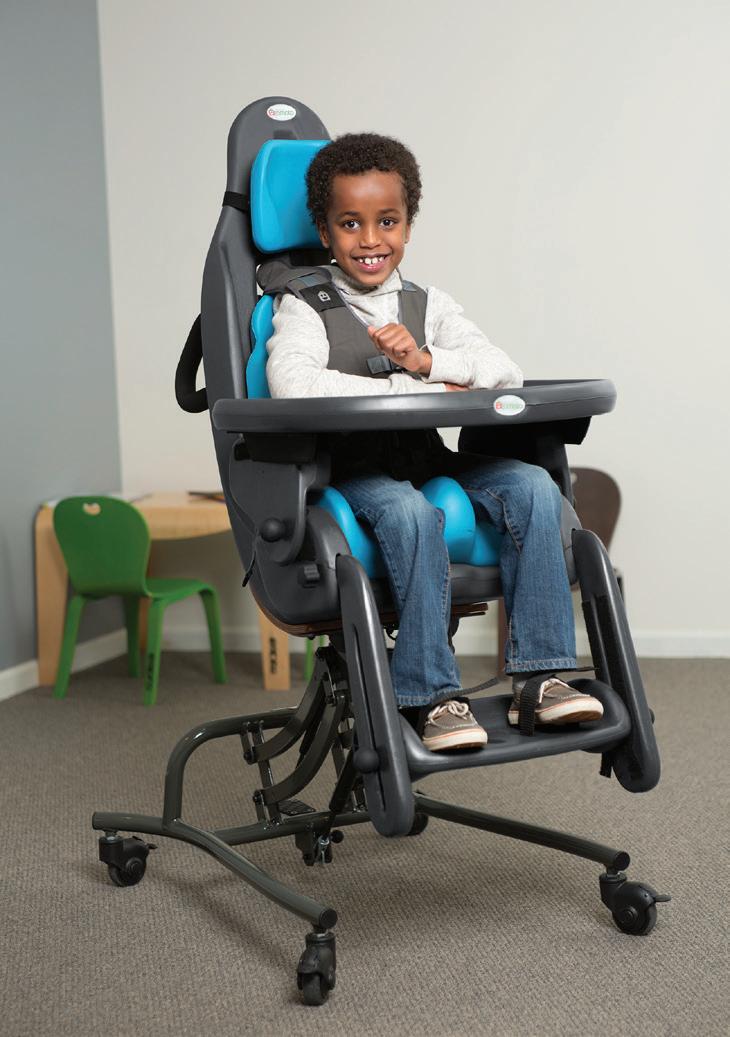
Manufacturer: Permobil
Supplier: Permobil Australia
Weight: Up to 91kg
Height: N/A
Manufacturer: Special Tomato
Supplier: RTD Australia
Weight: Up to 59kg
Height: Up to 160cm
• Can be customised to suit each individual and has built-in growth adaptability.
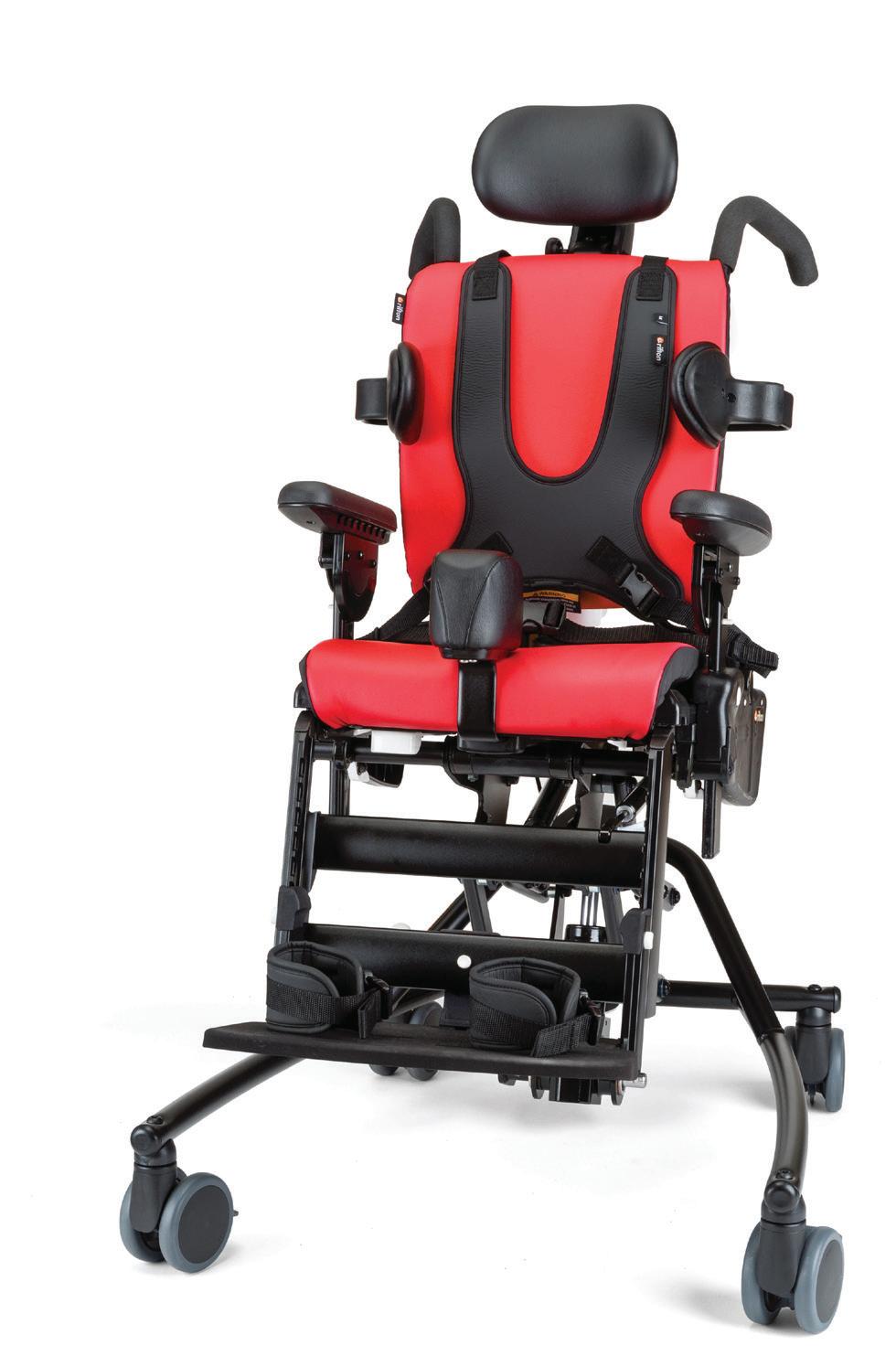
• Choices of seat cushions featuring Special Tomato’s soft-touch material, durable and tough.
• Features Tilt-in-Space – whilst in the seat, floor to table height and simple, tool-free adjustments. This seating system is uniquely designed with cushion technology made from latex free material that is peel and tear resistant.
Manufacturer: Rifton
Supplier: APEX Mobility, Medix21 Australia
Weight: Up to 108kg
Height: 32cm to 61cm
• Seat and back padding including adjustable back and seat belt.
• Base with Tilt-in-Space (manual).
• Armrests and short adjustable legs.
The Rifton Activity Chair is considered by many to be the ultimate clinical positioning chair that has revolutionised active indoor seating.
• The soft snug close support helps the occupant to relax and high armrests promote better breathing.
• Well-placed carry handles make transportation easy and large storage pockets are located on each side.
• Cleaning the Snooza chair is easy – just wipe down the medical grade vinyl cover. The centre comfort wrap supplied is removable and washable.
The Snooza Chair uses gravity to keep the occupant safe with good postural stability while out of their wheelchair.



Manufacturer: Seeds Seating
Supplier: Medifab
Weight: Up to 130kg
Height: 90cm to 170cm
• Supportive foam positioning system to provide postural control to a wide range of individuals.
Manufacturer: Leckey
Supplier: Sunrise Medical
Weight: Up to 22kg
Height: N/A
• Grow with you.
• Wide range of accessories and options.
• Has a high low base, and tilt. The Squiggles is perfectly designed to meet the unique needs of young children. With a large range of accessories and options the squiggles can be customised to suit your needs however basic or complex.

• Providing a snug and safe feeling for users who have perception deficits, the Gravity Chair follows the principle of ‘tension and relaxation’.
• Wipe down covers, it is available in 3 insert colours (red, green, or blue), and fits into the home or school environment perfectly!
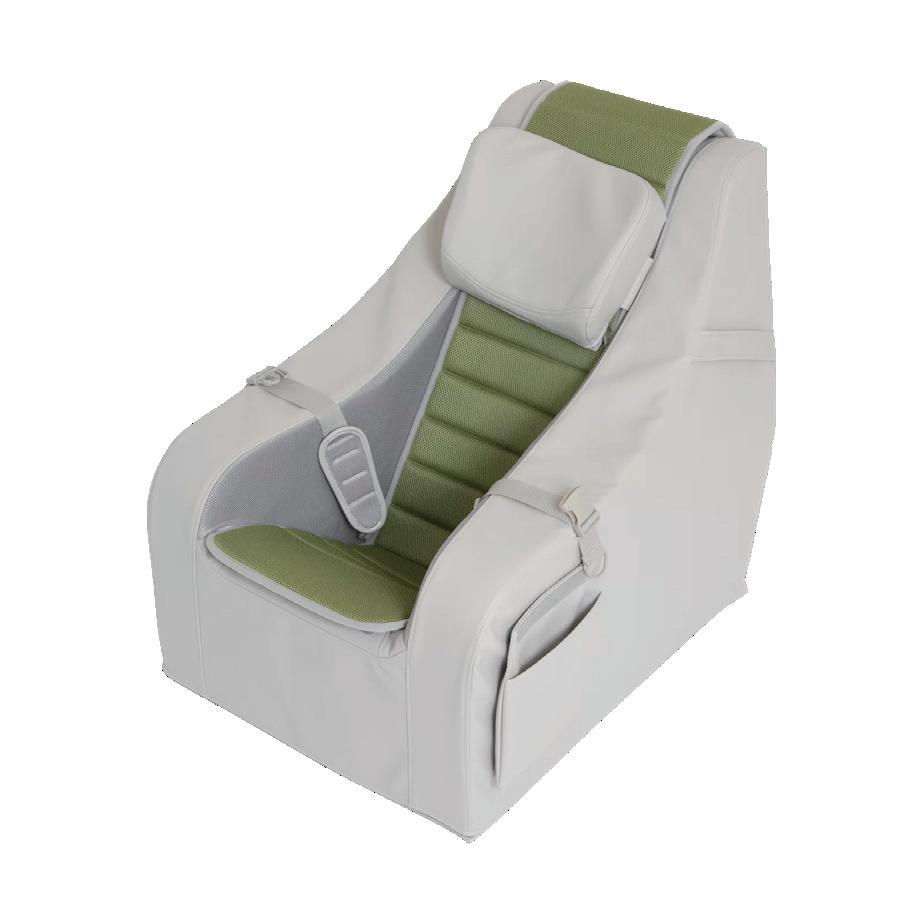

Manufacturer: Special Tomato
Supplier: RTD Australia
Weight: Up to 113kg
Height: Up to 170cm
• A perfect fit seat at a perfect fit height.
• Appropriate for individuals who are requiring mild to moderate postural support in sitting.
• Perfect for multiple user environments with tool free calibrated adjustments. Maintaining good posture equals less fatigue for children, so they can direct their attention to learning, eating, creating and socialising.
Manufacturer: Jenx
Medifab
Weight: Up to 25kg
Modern, child-centred styling combined with a comprehensive range of support options - for moderate to complex postural needs.
• Tool-free adjustments.
The Y-Base offers a high-low range of 26 to 75cm seat to floor height, as well as 40° of tilt-in-space, making the Atom a versatile and flexible indoor seating solution!
Manufacturer: R82
Supplier: Etac
Weight: Up to 70kg
Height: 35cm to 185cm
• Tilt-in-Space - seat unit tilts from -15° to 20° to accommodate both relaxed and active sitting postures. Depending on the level of function, some users will be able to activate the handle beneath the seat themselves.
• Built-in growth - Wombat Living offers stepless adjustment for growth.
• Angle adjustable push brace. Depending on the need, the push brace can be angled into the desired position.
The Wombat Living is a cool activity chair for all children, from toddlers to teenagers. The fresh look with modern colours makes it suitable for use in any indoor environment.


Manufacturer: Leckey
Supplier: Sunrise Medical
Weight: Up to 15kg
Height: Up to 95cm
• Early intervention activity development program.
• Cushioned floor mat and soft to touch, it is anti-bacterial and has positioning supports.
• Key positions – back lying, tummy lying, side lying and floor sitting.

Manufacturer: Schuchmann
Supplier: APEX Mobility
Weight: Up to 108kg
Height: 32cm to 61cm
• Backrest can be adjusted in height and angle.
• Headrest supports head control.
• Armrests can be adjusted in height.
Smilla is a unique indoor seating system that can be adapted to suit individual needs and requirements.

Manufacturer: Leckey
Supplier: Sunrise Medical
Weight: Up to 50kg
Height: N/A
• Mild to moderate postural support.
• Range of base options.
• Combination of supports available. The Pal is a classroom chair designed for children with mild to moderate postural needs. Coming with a range of accessories and options, it offers increased stability to help reduce fatigue and allow children to concentrate on learning for longer periods.

Manufacturer: Schuchmann
Supplier: APEX Mobility
Weight: up to 50kg
Height: 42 to 63cm
• Seat surface can be individually adjusted.
• The headrest can be adjusted in height, depth and angle.
• Thorax pelotte pads encourage stable and upright sitting positions.
Madita-fun therapy chair has unique features that make it one of the most desirable seating systems around.

Manufacturer: Careflex
Supplier: APEX Mobility
Weight: up to 160kg
Height: 16.3cm to 29.1cm
• Tilt-In-Space and back rest recline.
• Easy- adjust leg rest angle.
• Sprung suspension absorbs vibrations and ensures a good riding pleasure without compromising steering.
SmartSeat Pro is the ultimate in specialist seating where postural alignment and control is needed in the “easy chair’ format, fully adjustable to encourage a symmetrical and mid-line position and pressure relief.
For a full list of suppliers, please scan QR code.


